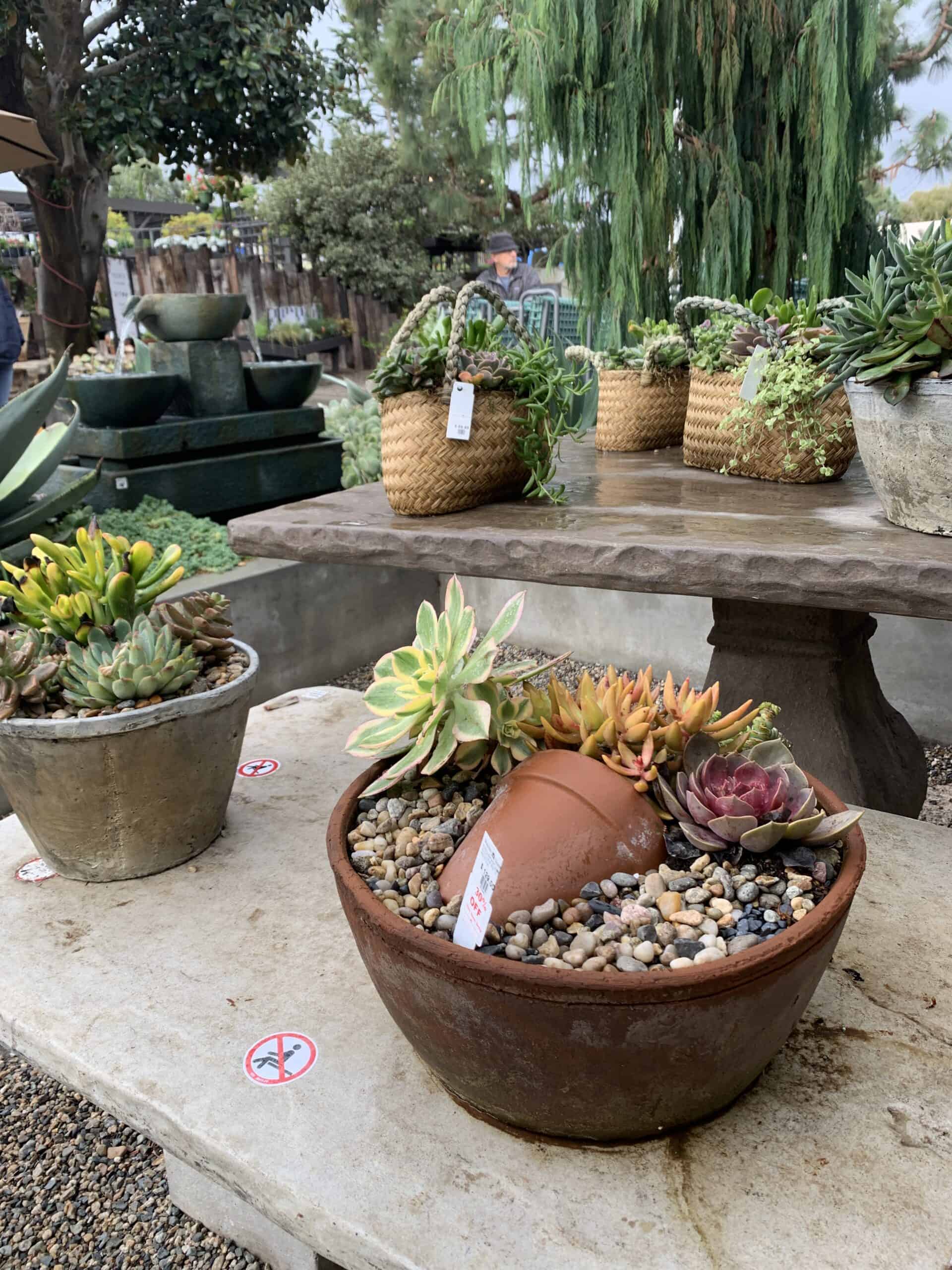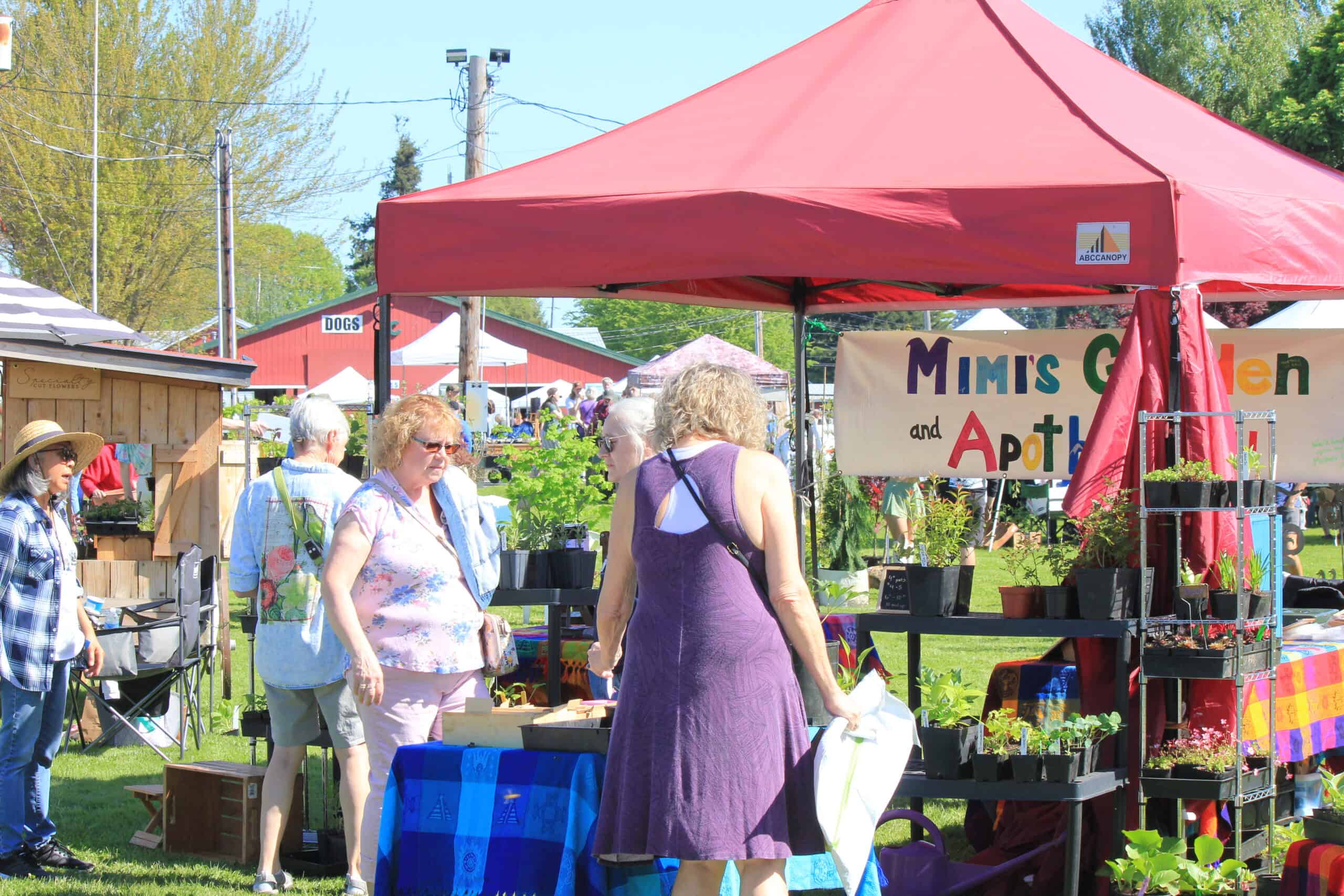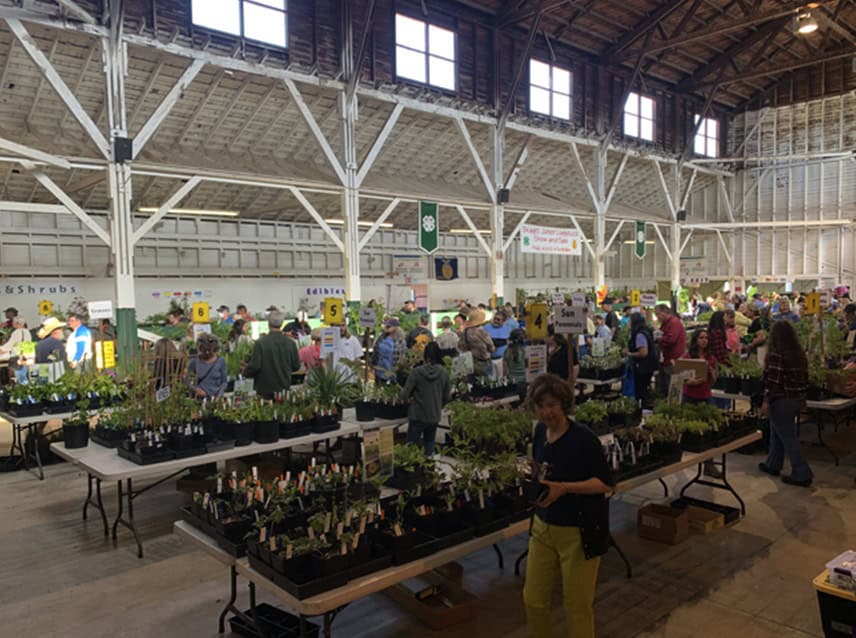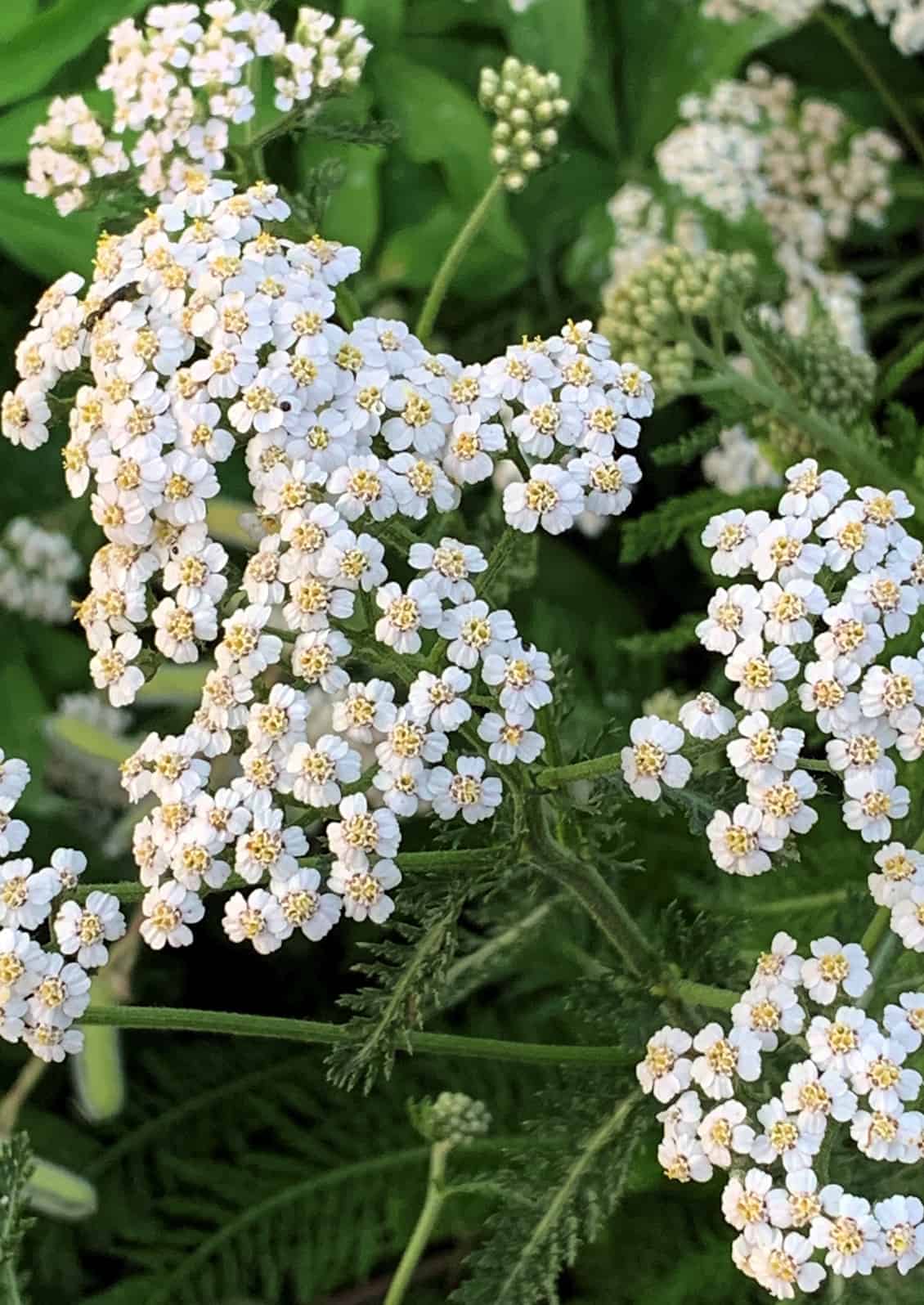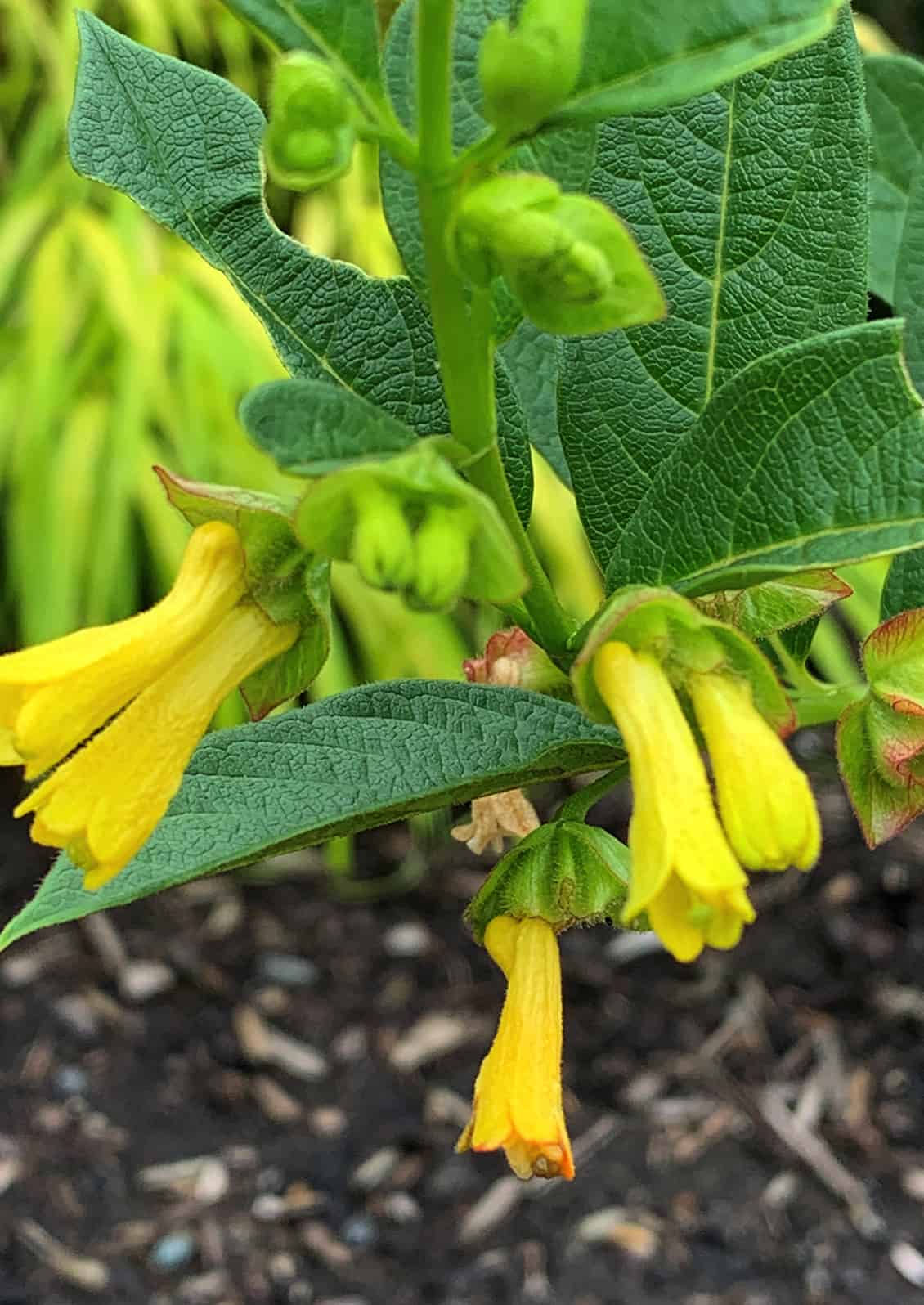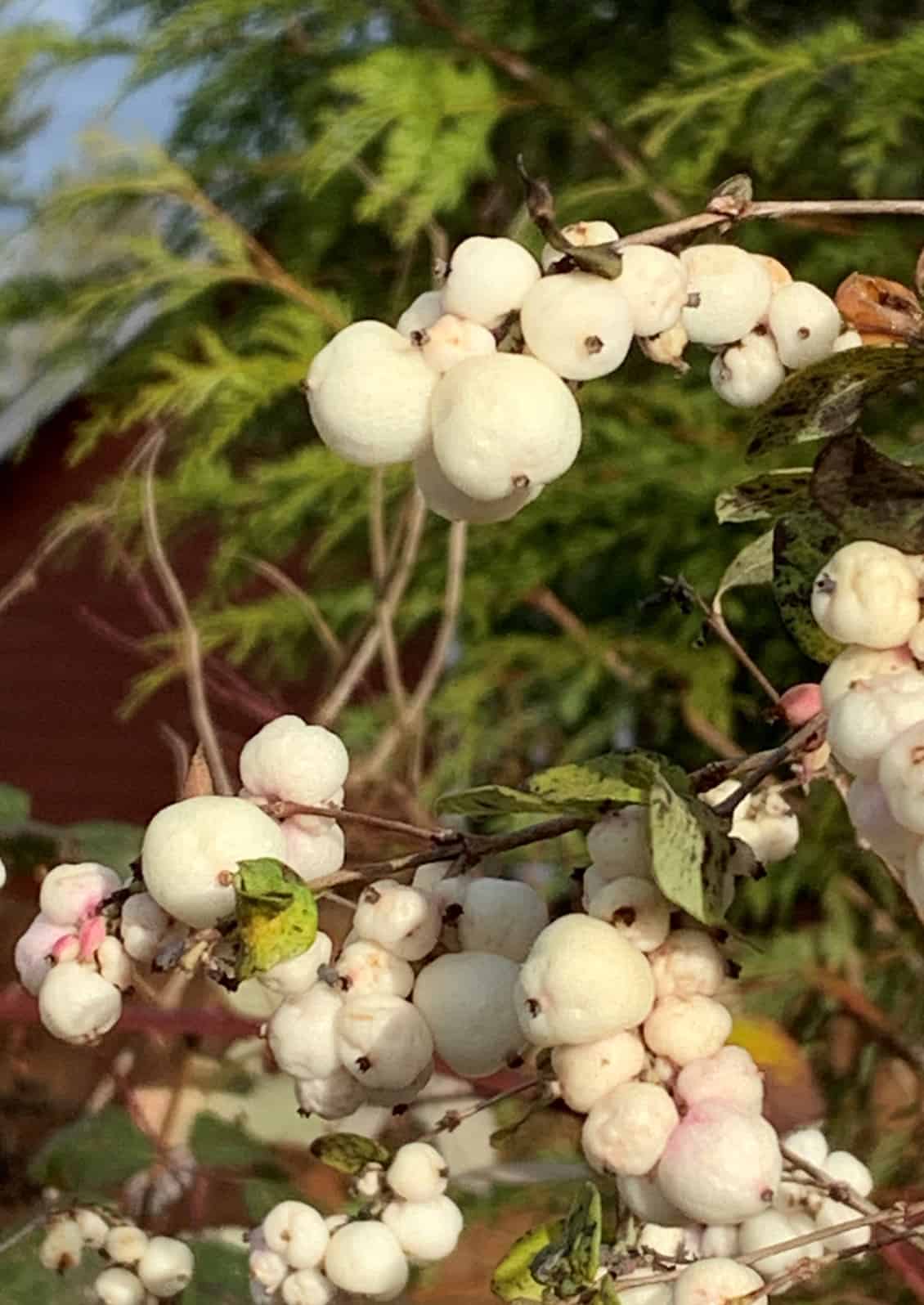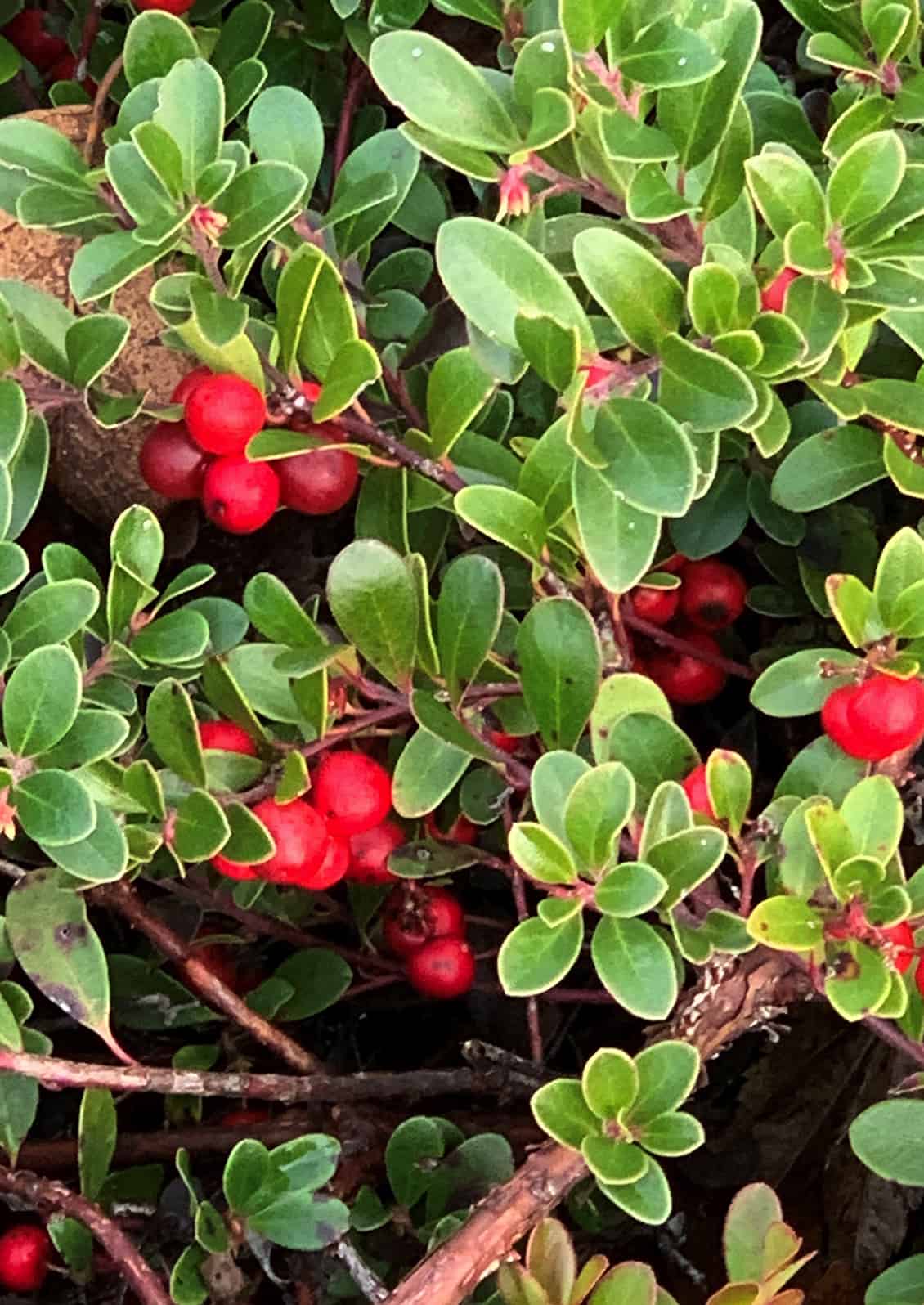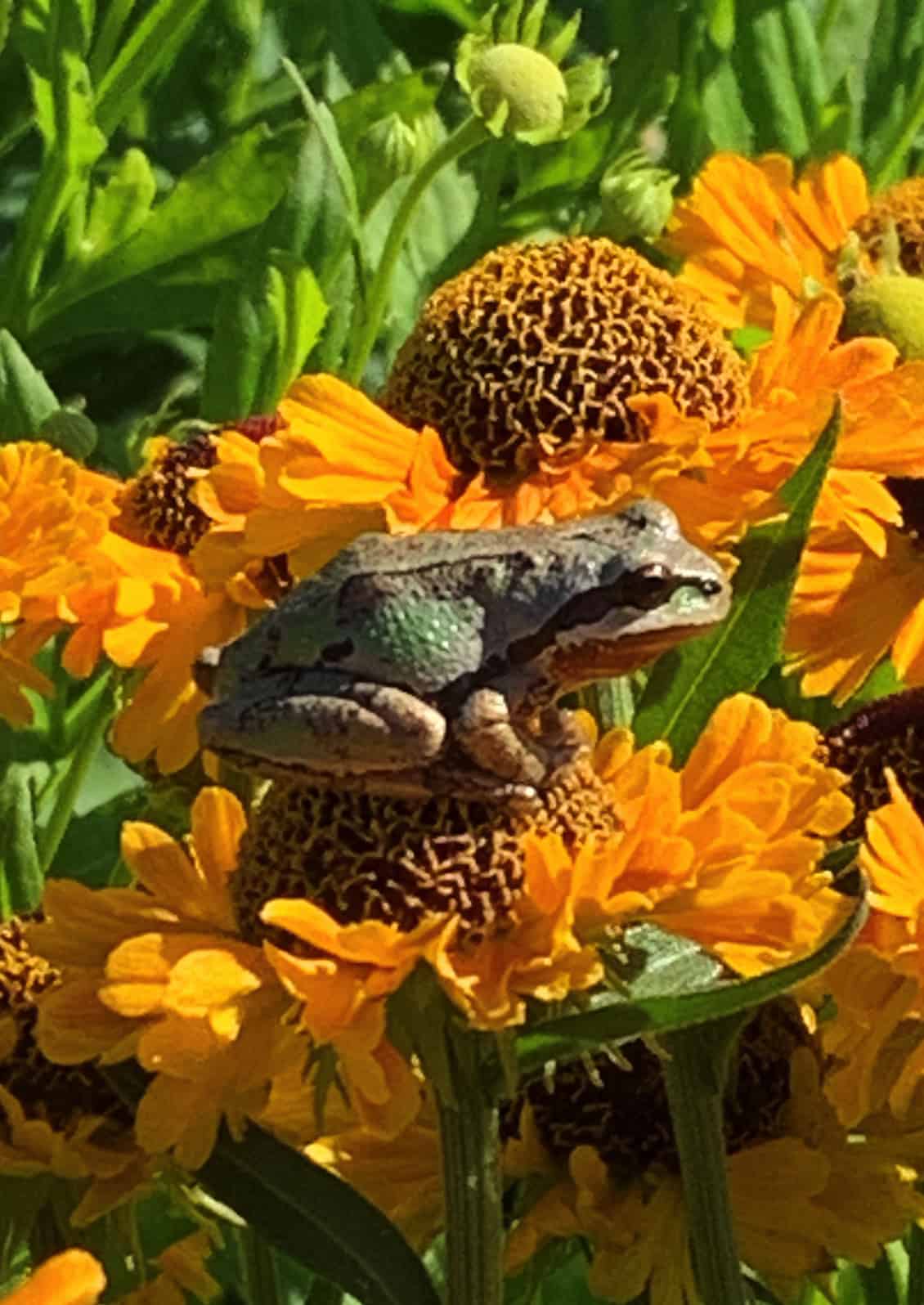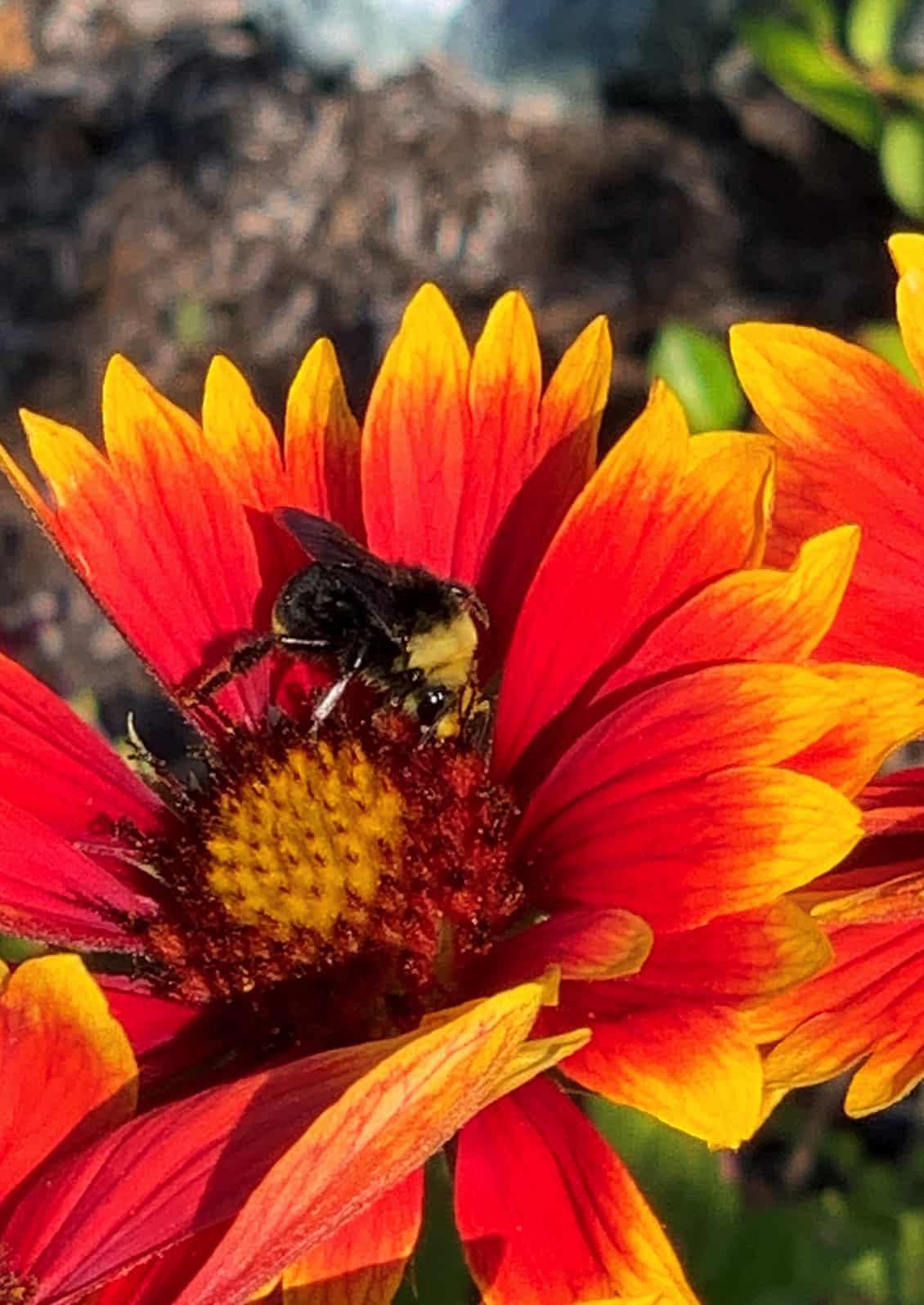
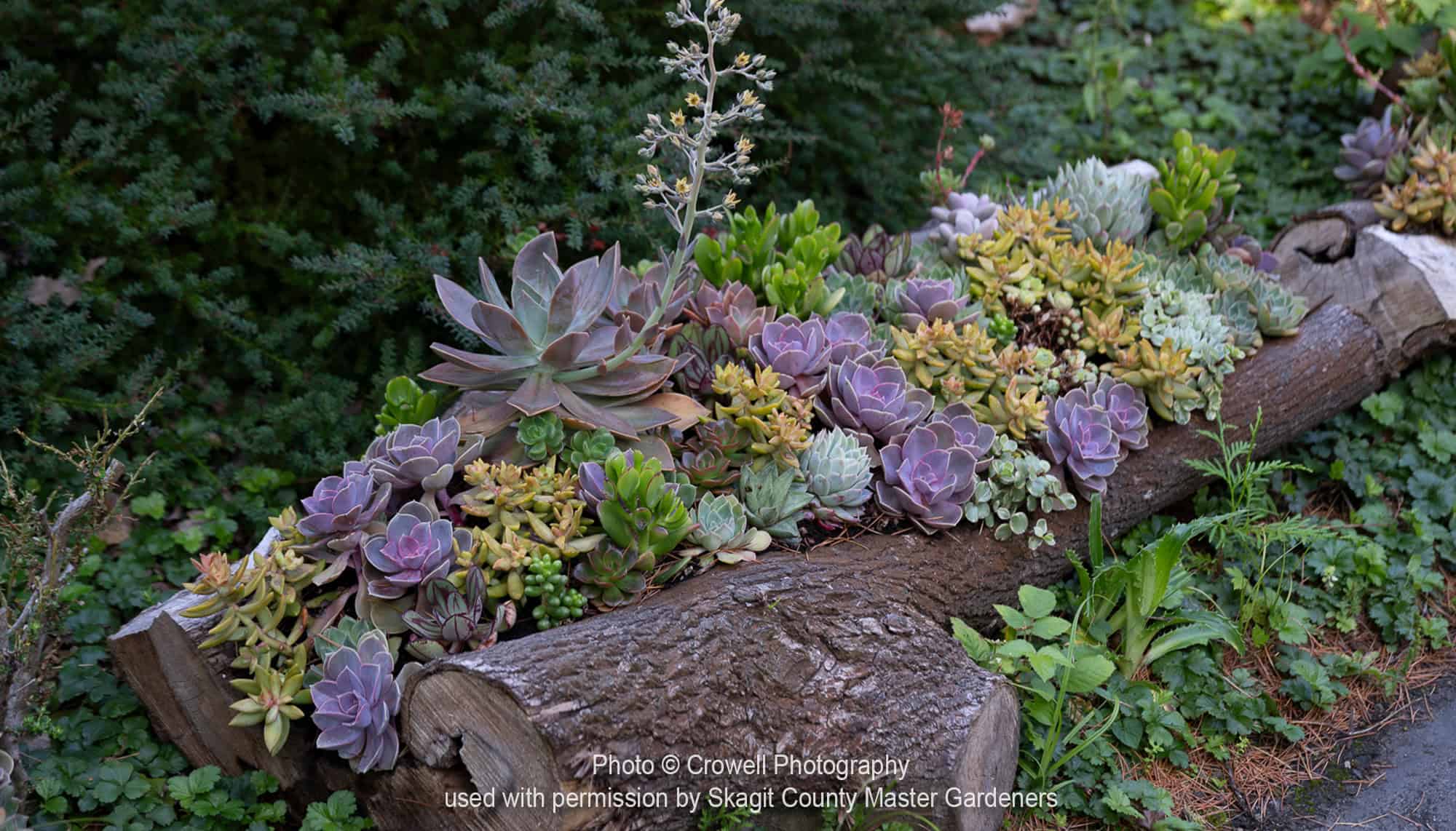
Enjoy a Day Trip to Tour a Pacific Northwest Garden
February is an excellent time to look ahead and plan a visit to one of the many public gardens showcasing a range of plants from native to tropical beauty
Subscribe to the Blog >By Skagit County WSU Extension Master Gardeners
Creating and appreciating a garden is a dynamic, creative process that benefits from the inspiration of others’ work, traditions, and history. Gardeners in the Pacific Northwest are fortunate to have access to many garden styles and a wide variety of plant combinations at gardens and nurseries that are open to the public – all within range of a day trip from Skagit Valley.
In this article, several Skagit County WSU Extension Master Gardeners share observations from their recent visits to a sampling of regional display gardens. Each author highlights the visit with inspirations ranging from the native rhododendrons of Meerkerk Gardens on Whidbey Island to the amazing cloud forest of the Seattle Spheres.
Perhaps you are hosting visitors this summer or in charge of planning an outing for a group of friends; use these ideas as a springboard for your next garden inspiration. Details for each garden include website links, contact information, logistics, and admission information to help prepare for a visit.
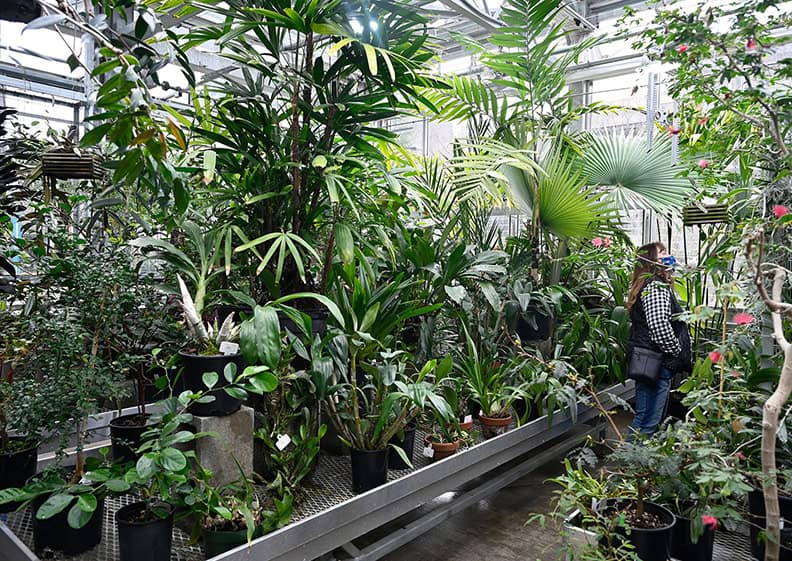
University of Washington Biology Greenhouse Photo © Kay Torrance
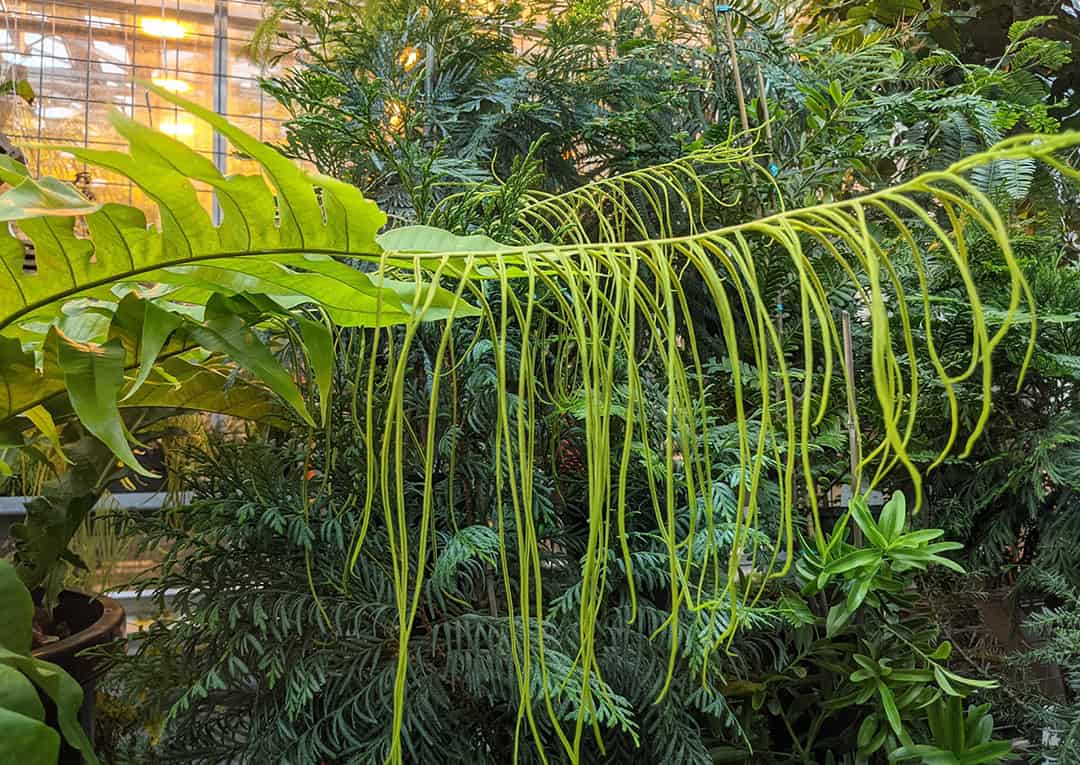
University of Washington Biology Greenhouse Photo © Jessamyn Tuttle
University of Washington Biology Greenhouse
Location: Lower level, southwest side of the Life Sciences Building, at 3747 W Stevens Way NE, Seattle, WA. Map
By Kay Torrance, Skagit County WSU Extension Master Gardener
In 2023, a group of Skagit Master Gardeners toured the UW Biology Greenhouse, the Elizabeth C. Miller Library, the UW Botanic Gardens and the Washington Park Arboretum. Though this excerpt focuses on the biology greenhouse, I recommend each of the venues as a treasure trove of plant learning,
The UW Biology Greenhouse is a 20,000-square-foot facility opened in 2022, showcasing over 6,000 plant species. According to the website, the new structure “replaces the original Botany Greenhouse, where the UW’s biology department had amassed one of the country’s most diverse plant collections over a period of 65 years.” Led by docents, the group explored four themed garden rooms: Desert, Tree of Life, Warm Tropics, and Cool Tropics.
The Desert Room features North American cacti and plants from Africa, including a Welwitschia from Namibia. Next, the group walked through the Tree of Life room, where plants are displayed in evolutionary order. Next, the tour moved into the warmth of the Warm Tropics Room, filled with palms, gingers, and orchids. The tour then took the Master Gardeners to the Cool Tropics Room, showcasing high-altitude tropical plants. The greenhouse also includes climate-controlled rooms for research and education, benefiting university students in fields such as plant ecology and landscape architecture.
Read an entire blog article about the 2023 visit to the UW Biology Greenhouse at https://skagitmg.org/visit-uw-botanic-garden/
Website: https://www.biology.washington.edu/facilities/greenhouse
Hours and tours:
- The UW Biology Greenhouse is open to the public from noon to 4 p.m. on non-holiday Wednesdays and 10 a.m. to 2 p.m. on the second and fourth Saturdays of the month-docent-led tours for groups of more than eight people by arrangement.
- The UW Botanic Gardens and Washington Park Arboretum are open daily to the public. https://botanicgardens.uw.edu/
Admission: Free
Contact information: https://www.biology.washington.edu/facilities/greenhouse/contact
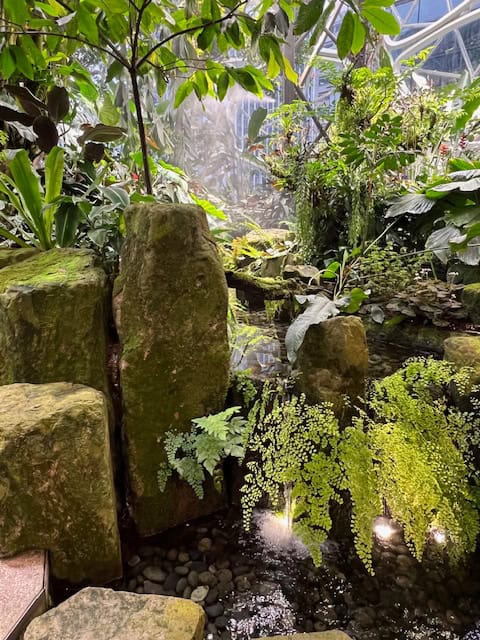
Amazon Spheres Photo © Laura Kuhn
The Seattle Spheres
Location: 2111 7th Avenue, Seattle
By Laura Kuhn, Skagit County WSU Extension Master Gardener
The Seattle Spheres is a private biosphere space created at Amazon headquarters near downtown Seattle in 2018. The space, which includes three glass-enclosed spherical conservatories, is open by reservation only to the public on the first and third Saturdays of each month.
This lush and beautiful facility supports a cloud forest environment – think rainforest tree canopy – supporting flora ranging from tiny begonias and orchids to large tree ferns and aloes. A highlight is the “living walls” that boast over 25,000 plants woven into 4,000 square feet of mesh in what the organization calls an “innovative demonstration of biodiversity.” Trees are planted in pots in the Canyon Living Wall area, and the vertical gardens are more than three stories tall.
There are over 40,000 plant varieties, with many plants in bloom in a wide range of colors, shapes, and sizes. Visitors may explore four stories of plants accessible by stairs or elevators.
Website: Seattlespheres.com
Hours: By reservation only, open to the public from 10 a.m. to 6 p.m. on the first and third Saturdays of each month. If you do not have a reservation or go to the location on another day of the week, visit the Understory or the Urban Arboretum found outside of The Spheres.
Admission: Free
Contact Information: For details and to make a reservation, go to https://www.seattlespheres.com/the-spheres-weekend-public-visits
Chihuly Garden and Glass
Location: 305 Harrison Street, Seattle
By: Kathy Wolfe, Skagit County WSU Extension Master Gardener
Chihuly Garden and Glass highlights a beautiful combination of the iconic glass works of artist Dale Chihuly set in a vibrant garden showcase. The Glasshouse and adjacent displays and exhibitions opened at the base of the Space Needle in Seattle Center in May 2012.
The stunning Chihuly glass art, coupled with beautiful gardens, is a collaboration that inspires visitors from around the world. Chihuly has worked with public gardens – large and small – in the US and internationally to create colorful blends of plants and glass that meld into complementary natural vignettes. Gardeners can be inspired by the clever combinations of glass and plants.
Depending on the time of year, visitors to the Glasshouse may see a wide range of camellias blooming among dogwood, along with scarlet daylilies and fuchsias, accented by icicle-shaped glass towers and spheres incorporated to embellish the scene. The gardens are transformed seasonally, and a master plant list used by the landscape design team is available on the facility’s website.
In addition to the garden area of the exhibit, ticket prices include the Exhibition spaces containing Chihuly’s glass creations, drawings, large architectural installations, and personal collections. A theater offers a short film on Chihuly’s artwork; a free audio tour is available. The Bar restaurant provides food and beverages; and a bookstore offers a selection of gifts, cards, and books.
Website: https://www.chihulygardenandglass.com
Hours and tours: Hours vary daily, so check the website for details. The venue can be closed for private events. Highlight tours are offered three times daily and included in the price of admission.
Admission: Tickets should be purchased in advance. Prices range from $22 to $37.50 depending on a guest’s age (free for children under four) and the time of year.
Contact Information: For general information, call 206-753-4940 or contact guestservice@chihulygardenandglass.com
Happening now: “Winter Brilliance” is a light and music installation containing more than 700 hand-blown glass forms that runs until February 28, 2025, in Gallery 1.
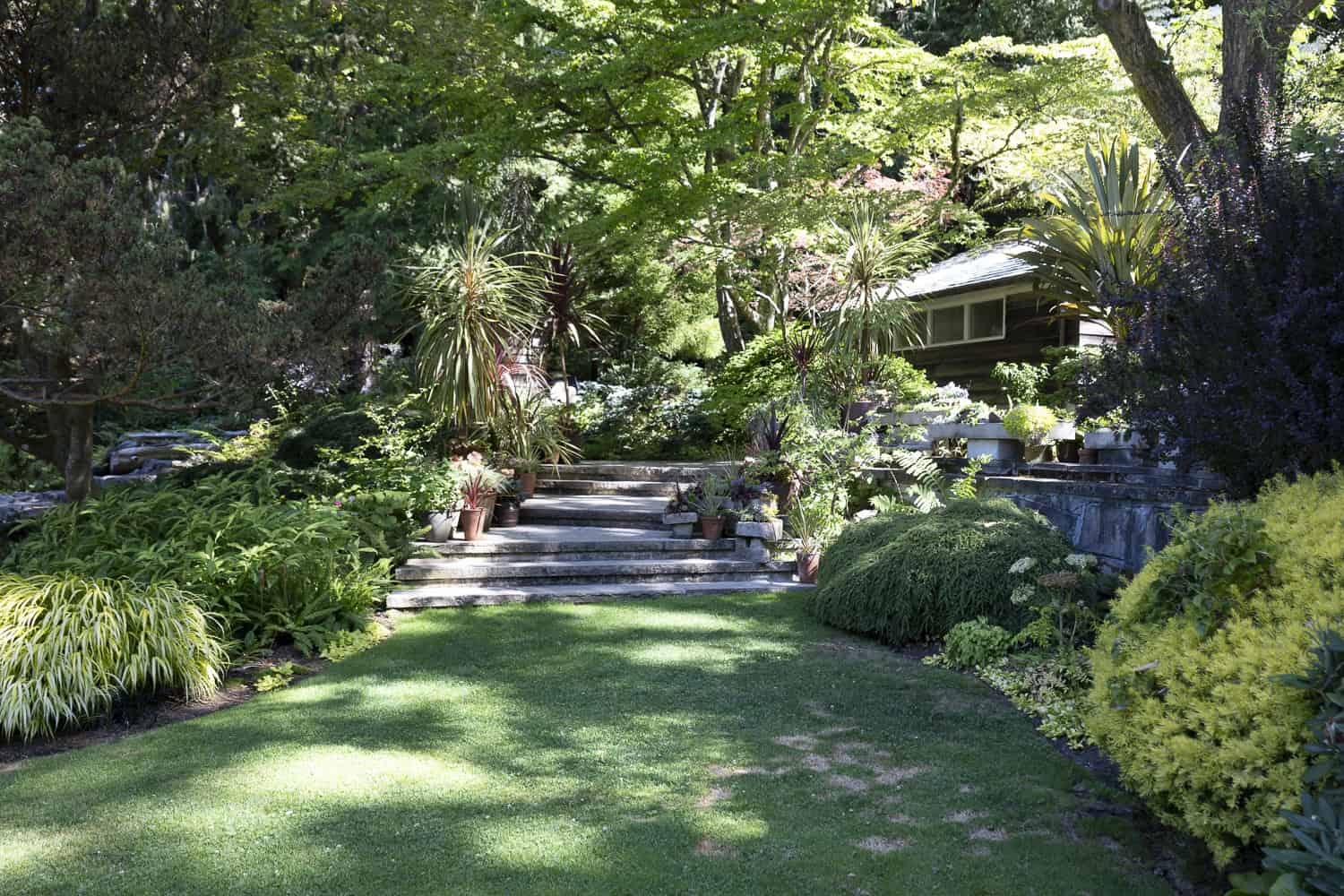
Elizabeth C. Miller Botanical Garden Photo © Crowell Photography.com
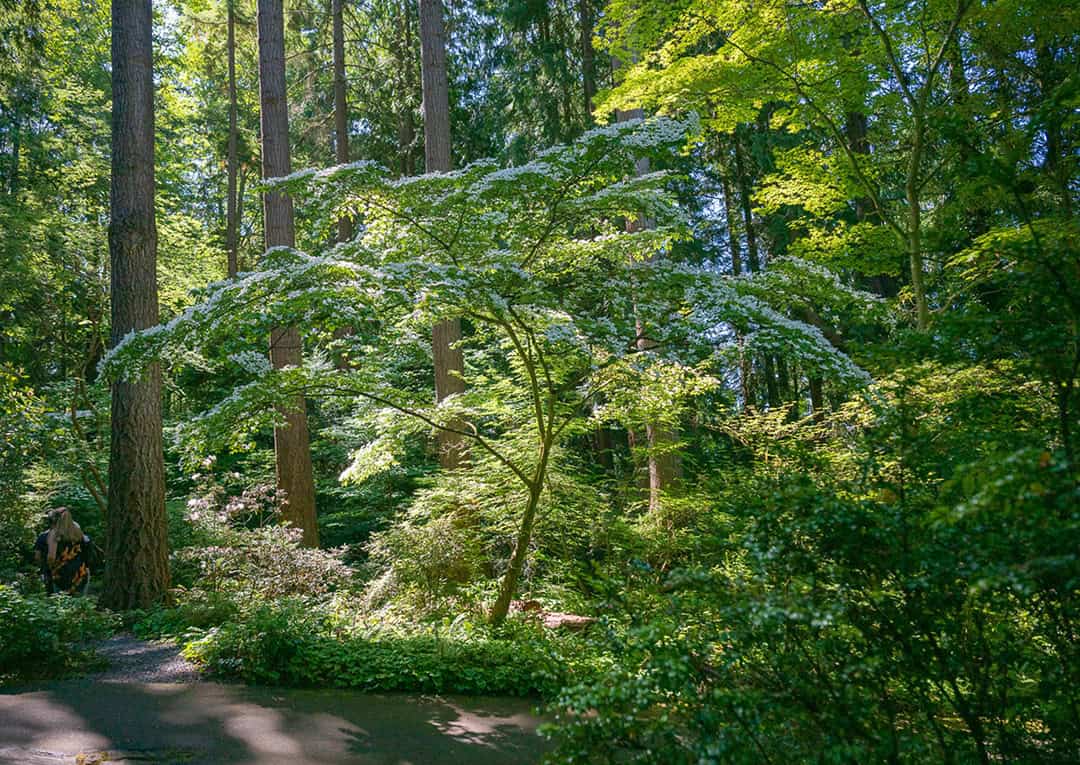
Elizabeth C. Miller Botanical Garden
Photo © Crowell Photography.com
Elizabeth Carey Miller Botanical Garden
Location: 79 Olympic Drive Northwest, Seattle
By Nancy Crowell, Skagit County WSU Extension Master Gardener
In Western Washington gardening history, there are a handful of people all serious gardeners should know about because of their incredible, prolonged influence on gardening in the region. One of those people was devoted horticulturist Elizabeth C. Miller, whose name is now associated with the Elizabeth Miller Library at the UW Center for Urban Horticulture and the Elizabeth Carey Miller Botanical Garden – commonly known as the Miller Garden.
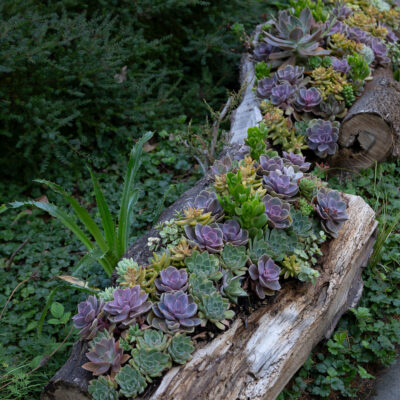
Elizabeth C. Miller Botanical Garden
Photo © Crowell Photography.com
The Miller Garden, which was developed on six acres of Miller’s private home, has established collections and themed areas. However, the key to why a diehard gardener should take a tour here is that this garden is where Great Plant Picks tests and chooses the plants recommended for our Pacific Northwest gardens. The garden’s website describes the Great Plant Picks as “recommendations for a comprehensive palette of outstanding plants for the maritime Pacific Northwest.” The website states that more than 1,000 plants have been selected to date for gardeners living west of the Cascade Mountains from Eugene, Oregon, to Vancouver, British Columbia.
The garden was designated a public garden in trust after Miller died in 1994, unbeknownst to her neighbors in the exclusive neighborhood. As a compromise to neighbors concerned about large numbers arriving in the neighborhood, the garden is limited to 500 visitors a year, and the coveted entry tickets are sold out months in advance. In fact, the entire 2025 tour season is already sold out.
The garden is well established, yet still a work in progress as caretakers update and refresh the original plantings. A tour reveals surprises around every corner. Fall is a favorite time to visit due to the vast collection of established Japanese maples, though a midsummer visit was equally impressive.
Miller and her horticultural adventures are fascinating. Read more at https://millergarden.org/, then toss your name into the tour lottery. I hope you get a call.
Website: https://millergarden.org/
Hours and tours: All visits to the Miller Garden are by reservation only with a staff member as a guide. The garden website states, “due to an unprecedented response, the 2025 tour season is now filled.” Early bird reservations for 2026 will open in autumn 2025. A “virtual” tour is offered online at https://millergarden.org/the-garden/
Admission: Free
Contact Information: To be added to the email list for class or tour date announcements, send a message to info@millergarden.org
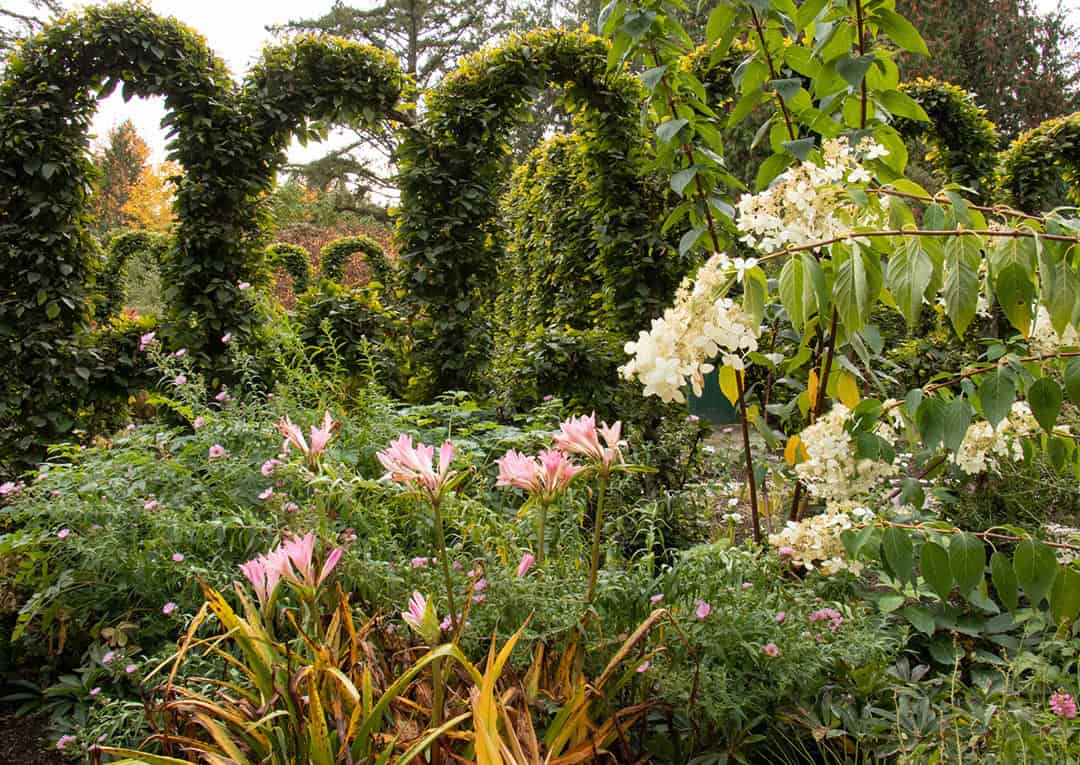
Heronswood Photo © Heronswood

Heronswood
Photo © Heronswood
Heronswood
Location: 31912 Little Boston Rd NE, Kingston, WA Note: Ferry wait times to the Olympic Penninsula can be long so make reservations and plan accordingly.
By Anne Hays, Skagit County WSU Extension Master Gardener
Nestled in the charming town of Kingston on the north end of the Olympic Peninsula, Heronswood Garden can feel like stepping into a living dream. This enchanting botanical garden, established by renowned plantsman Dan Hinkley, is a paradise for anyone who cherishes nature’s quiet beauty.
The gardens opened in 1987 and comprise 15 acres and more than 8,000 varieties spread across six distinct yet integrated gardens.
As guests pass through the garden gate, they are immersed in a world where every path leads to a new discovery. Heronswood’s collection of rare and unusual plants is astounding, curated from all corners of the globe. The garden’s thoughtful design blends exotic with native plants, creating a seamless tapestry of textures and colors that change with the seasons.
The garden bursts to life in spring, with rhododendrons in full bloom in a variety of vibrant hues contrasting with the surrounding lush greenery. A fern glade mesmerizes visitors with the delicate interplay of light and shadow.
As one of the state’s “hidden gems,” the gardens offer tranquility and intimacy, allowing guests to wander for hours enjoying the color, listening to the birdsong, and gaining inspiration.
For some visitors, Heronswood is more than a garden-it’s a haven. For plant lovers, artists, and anyone seeking solace in nature, it’s a destination that lingers in the heart long after.
Website: https://www.heronswoodgarden.org/
Hours: 9 a.m. to 3 p.m. Saturday and Sunday. Closed major holidays. Summer opening hours start April 2, 2025.
Admission: $10 for adults, $5 for youth aged 7 to 17, and free for children aged 6 and younger.
Contact Information: 360-297-9620, Info@heronswoodgarden.org. To learn more about classes and events, go to https://www.heronswoodgarden.org/event
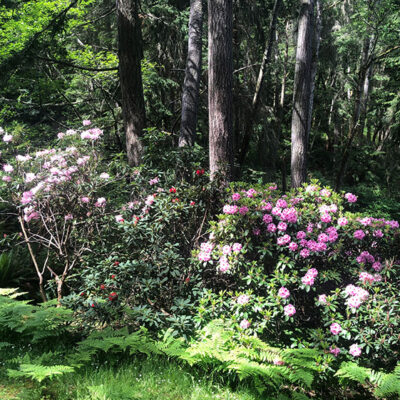
Meerkerk Gardens
Photo © Anne Hayes
Meerkerk Gardens
Location: 3531 Meerkerk Lane, Greenbank, WA (Whidbey Island)
By Anne Hayes, Skagit County WSU Extension Master Gardener
Nestled just 50 miles from Mount Vernon is Meerkerk Gardens, described as a well-curated “peaceful woodland garden.” The grounds provide a conveniently accessible garden, one of Whidbey Island’s best-kept secrets.
Established by Ann and Max Meerkerk, the grounds include a 10-acre Northwest woodland display garden and 43 woodland acres lined with nature trails. The gardens showcase native flora, including rhododendrons, azaleas, and companion plants, in a variety of garden rooms. Visitors may stroll along the curving, easy-walking paths through the splendor of rhododendrons galore – featuring vibrant shades of colors from white to pink and vibrant red to purple. Today, the Meerkerk Rhododendron Garden nonprofit manages the gardens and woodlands, established in 2002.
In addition to garden access, the website offers detailed information about seasonal guided walks, concerts, children’s programs, nature classes, rhododendron care classes, and guided tour information. The website also features a bloom report so guests can time a visit to experience the complete joy and bloom of the gardens. The garden features color and texture during all seasons.
A special addition is the onsite nursery, open by appointment only in the fall and winter months, reopening in March on Friday, Saturday, and Sunday.
Website: gardeninfo@meerkerkgardens.org
Hours: Open 9 a.m. to 4 p.m. daily
Admission: $10 for adults and free for children under age 13. Dogs on leash are welcome.
Walks: Guided walks are offered during some seasons, starting at 1 p.m. at the Gatehouse and lasting about 90 minutes. Walks are free for Friends of Meerkerk (and children under 13); the cost is $15 per person for non-members. Preregister at www.meerkerkgardens.org/events
Contact Information: 360-678-1912
Is there a garden you love or hope to visit soon?
Share your favorite display gardens in the comment section below.
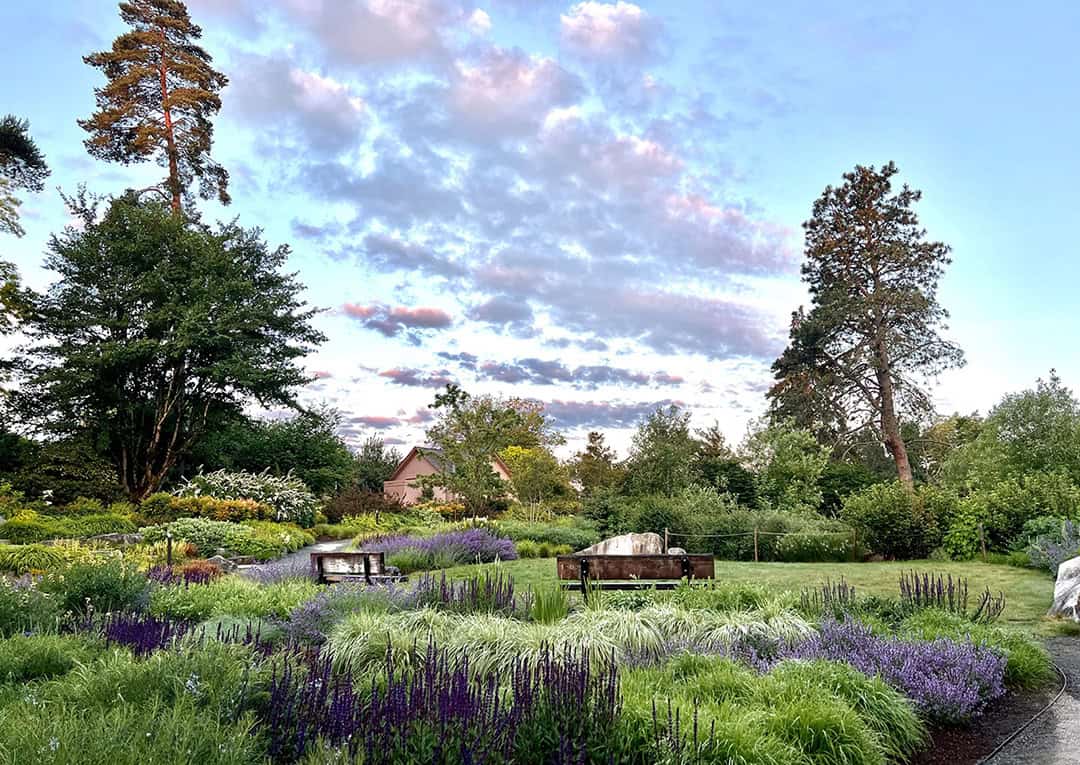
Urban Meadow at Bellevue Botanical Garden Photo © James Gagliardi, Bellevue Botanical Garden Director
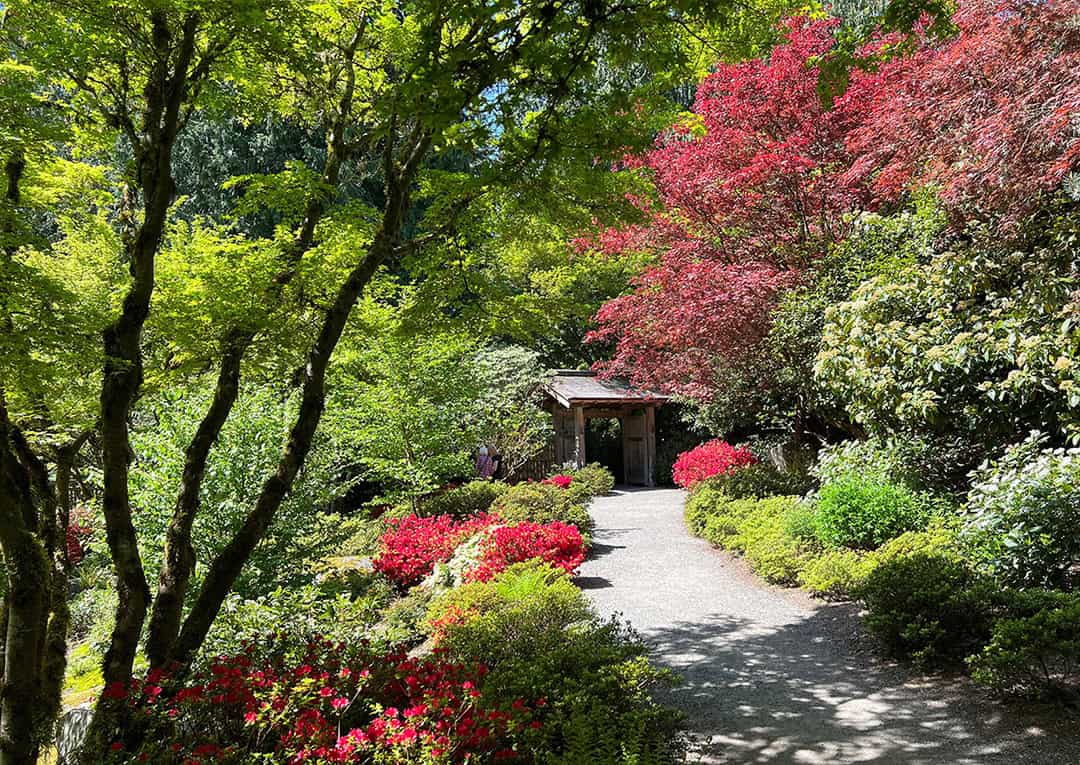
Yao Garden at Bellevue Botanical Garden Photo © James Gagliardi, Bellevue Botanical Garden Director
Bellevue Botanical Garden
Location: 12001 Main St., Bellevue, WA
By Diana Wisen, Skagit County WSU Extension Master Gardener
As one of the most beautifully designed public botanical gardens in the United States, the Bellevue Botanical Garden is a “must-see” for anyone who loves gardens in the Pacific Northwest. The garden spans 53 acres in a wondrous mixture of cultivated gardens, restored woodlands, natural wetlands, and native plant collections. The paths lead visitors through hillside rock gardens, ponds, and a stream, through forests, past a gnome door hidden under a tree, and a Chinese garden, all with lovely works of garden art throughout.
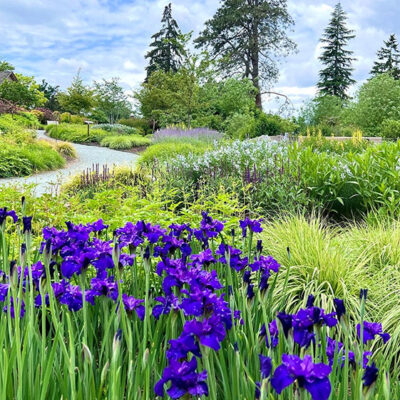
Urban Meadow with irises at Bellevue Botanical Garden Photo © James Gagliardi, Bellevue Botanical Garden Director
Visitors will likely see varieties of trees they have never seen before. Visitors may wish to bring a cell phone to use the QR codes on the signage for more educational information about the plants. A small professional staff maintains and manages the garden along with local groups and individuals who donate nearly 20,000 hours a year to maintain the gardens.
The garden is known for its winter light display called “Garden d’Lights” during December, with tickets sold online.
The garden is currently hosting a special traveling exhibit called “The Lost Birds” through September 2025. The display features hauntingly beautiful giant bronze statues of extinct birds placed in a circle.
The Trillium Store gift shop and Copper Kettle Coffee shop both have seasonal hours.
Website: https://bellevuebotanical.org/
Hours and tours: Open daily from dawn to dusk, including all holidays. Free public tours are available on Saturday and Sunday, April through October. Private docent-led group tours can be scheduled online.
Admission: Free. Service animals are only allowed in the garden.
Contact Information: Administrative Office may be reached at 425-452-2750. To contact the Bellevue Botanical Garden Society, email bbgsoffice@bellevuebotanical.org
Skagit County WSU Extension Master Gardener Discovery Garden
Location: 16650 State Route 536 (Memorial Highway), Mount Vernon, WA
By Ginny Bode, Skagit County WSU Extension Master Gardener
The Skagit County WSU Extension Master Gardener Discovery Garden, located on State Route 536 west of Mount Vernon, always amazes visitors. A stop at the gardens is an easy addition to the list of area attractions.
First-time visitors are often surprised by the extensive collection found in the 1.5-acre garden. The well-maintained paths wind through 25+ garden rooms, including a koi pond, an herb garden, a vegetable garden, and many benches for resting. Each garden has a focus on specific plants that thrive in the Skagit Valley.
Visitors will find many educational opportunities and kiosks about growing fruits and vegetables, ornamental and native plant gardening, pollinators, and composting.

The Children’s Garden at Skagit County WSU Extension Master Gardener Discovery Garden Photo © Sue Wren
A highlight is the Children’s Garden, which is filled with colorful plants and whimsical structures. It is a place where children can touch, smell, and explore different textures, as well as vegetable patches and flower beds that encourage curiosity about how food grows and foster a love of nature and gardening.
The Discovery Garden, designed to inspire and educate the public, is maintained by 150 volunteer master gardeners. An annual open house is held in the garden from 10 a.m. to 2 p.m. on the last Saturday in June, featuring a plant clinic and children’s activities.
Adjacent to the Discovery Garden are two additional public display gardens on the WSU NWREC property: the 0.5-acre Salal Native Plant Garden and the 6-acre NW Fruit Garden.
Website: https://skagitmg.org/home/discovery-garden/
Hours: Open daily during daylight hours
Admission: Free
Contact Information: For information, go to https://skagitmg.org/home/discovery-garden/
THANK YOU TO THE AUTHORS:
Kay Torrance, Laura Kuhn, Kathy Wolfe, Nancy Crowell, Anne Hays, Diana Wisen, and Ginny Bode with the introduction by Kari Ranten. All are Skagit County WSU Extension Master Gardeners who love visiting and finding inspiration in display gardens near home or on holiday.
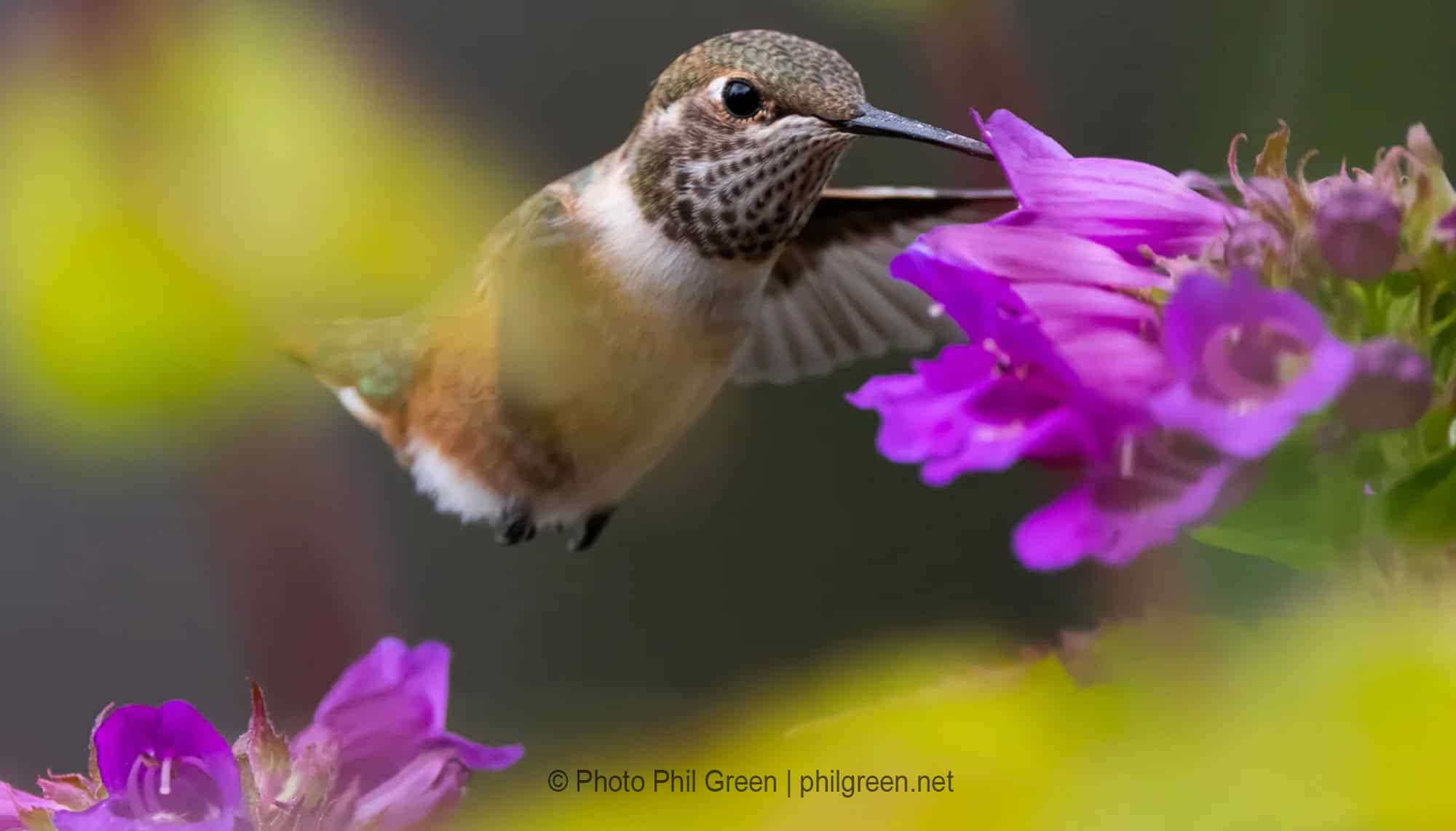
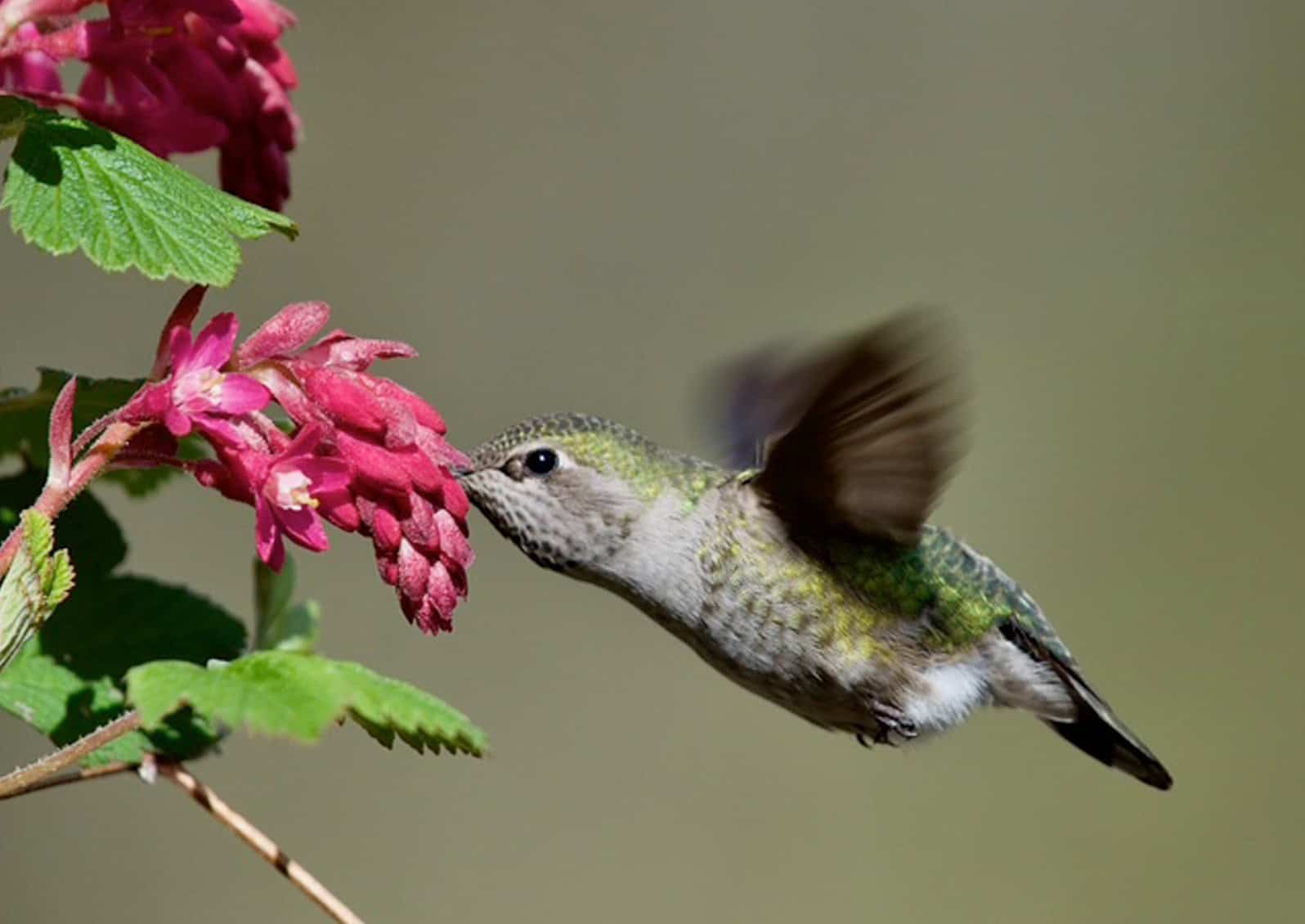
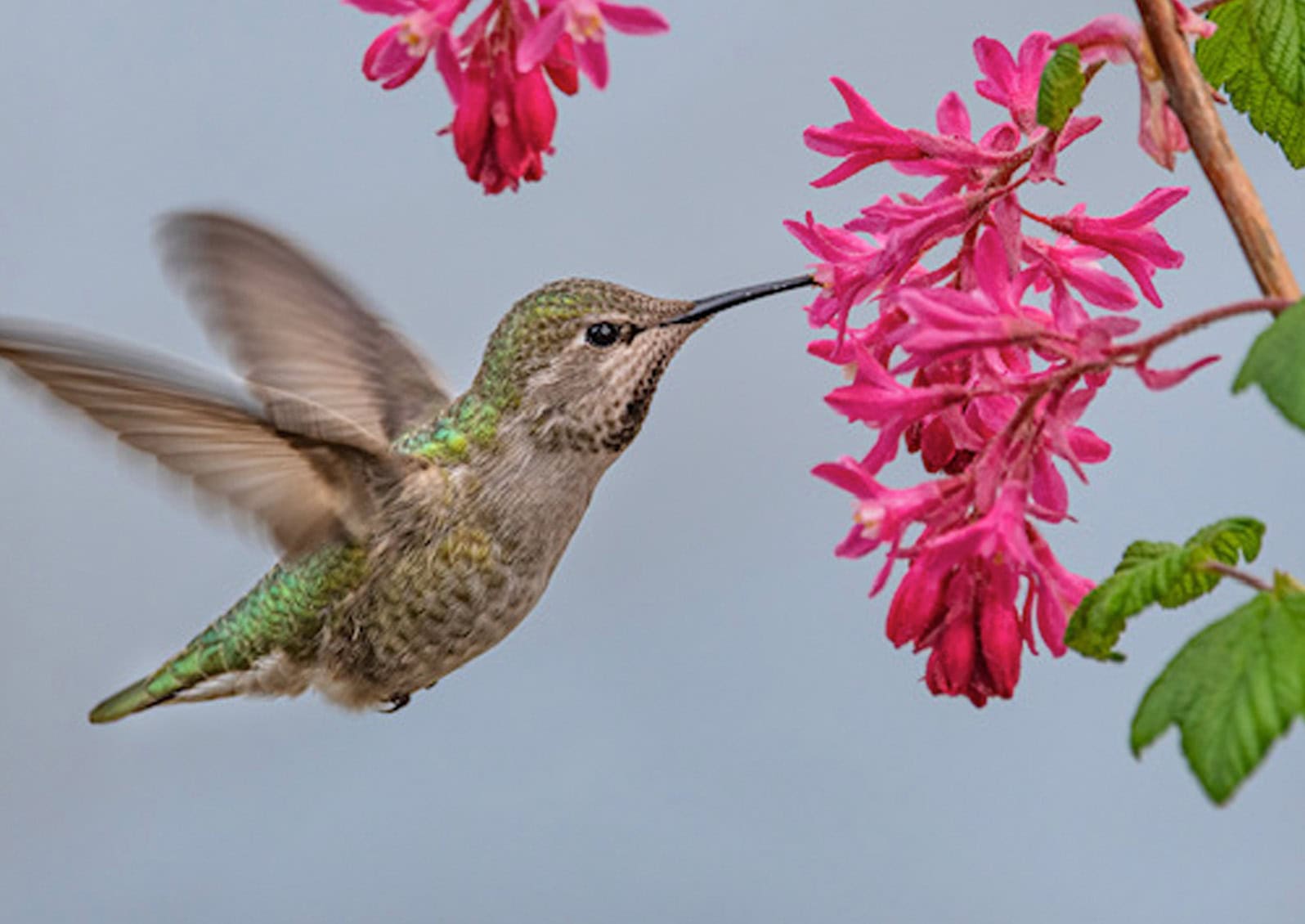
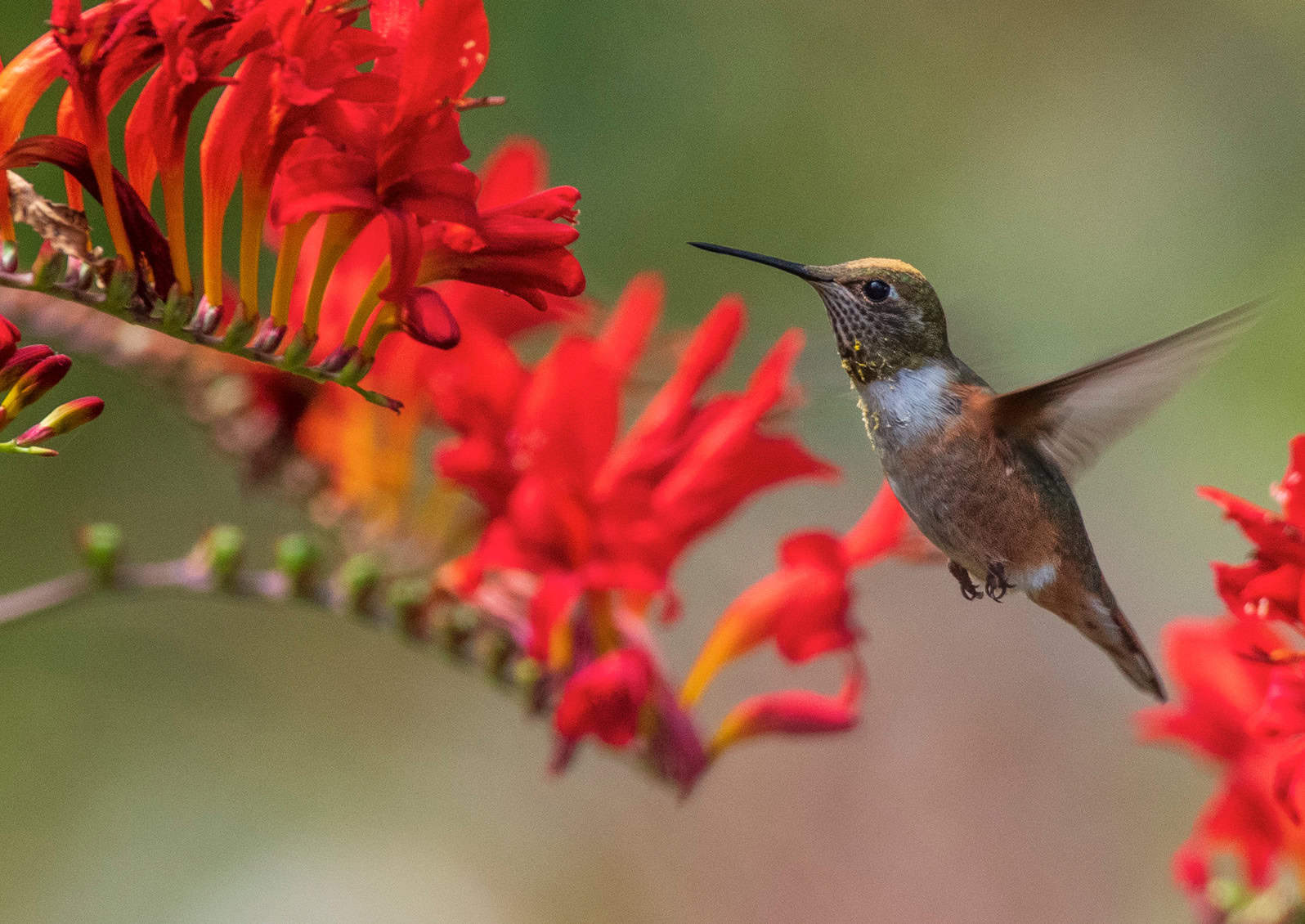
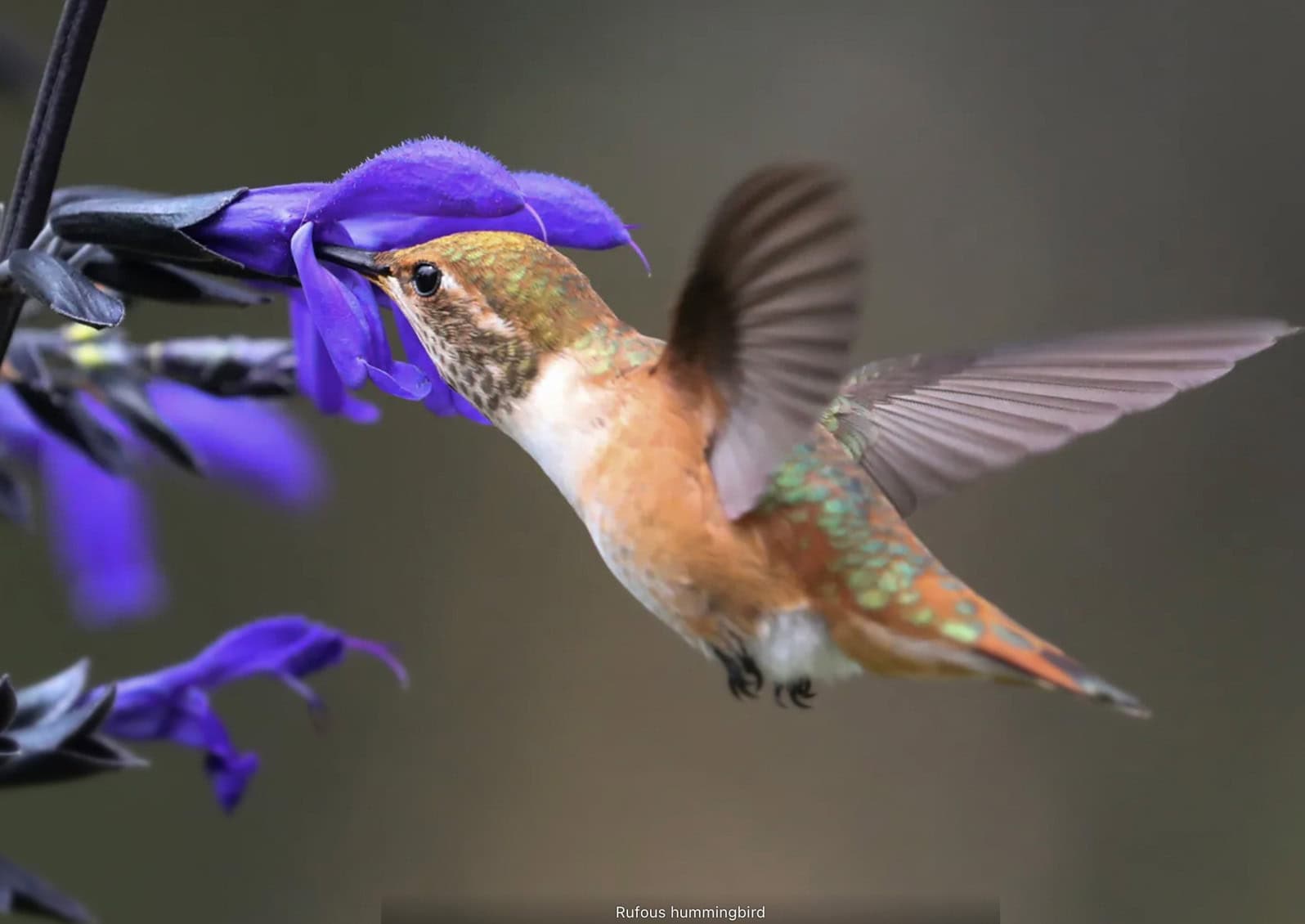
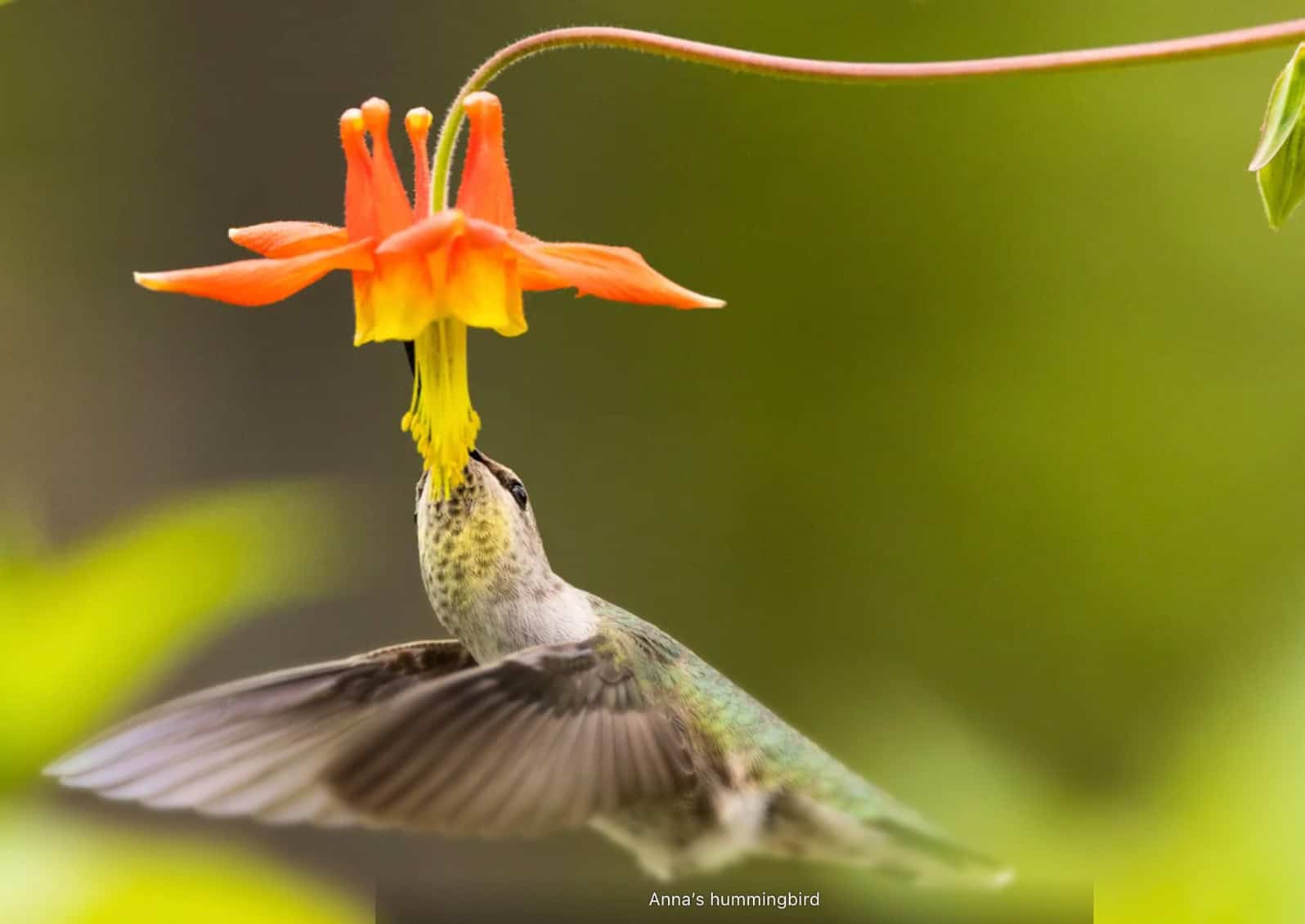
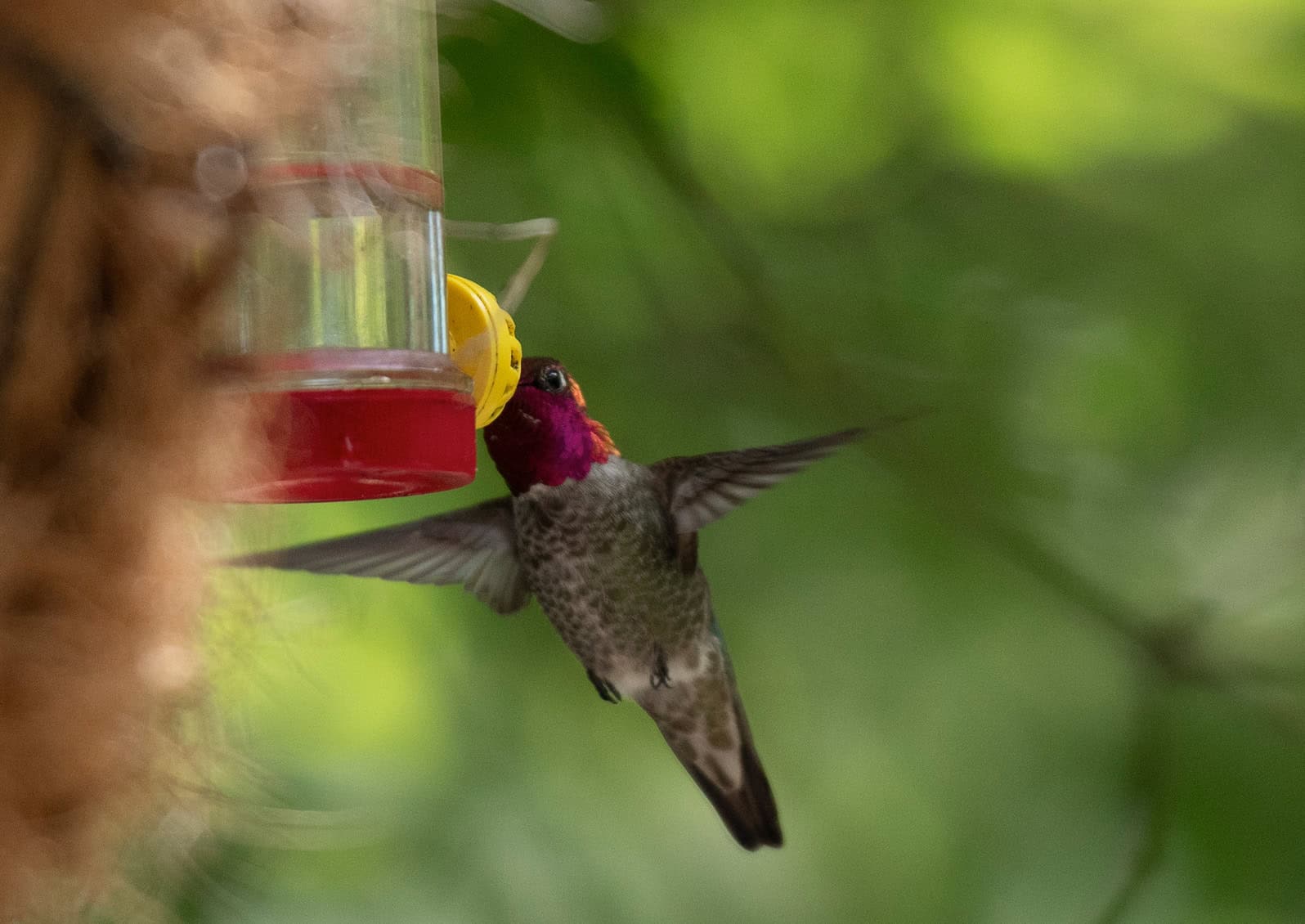
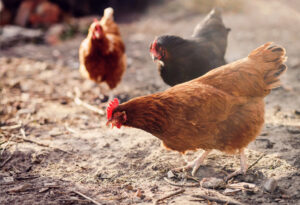
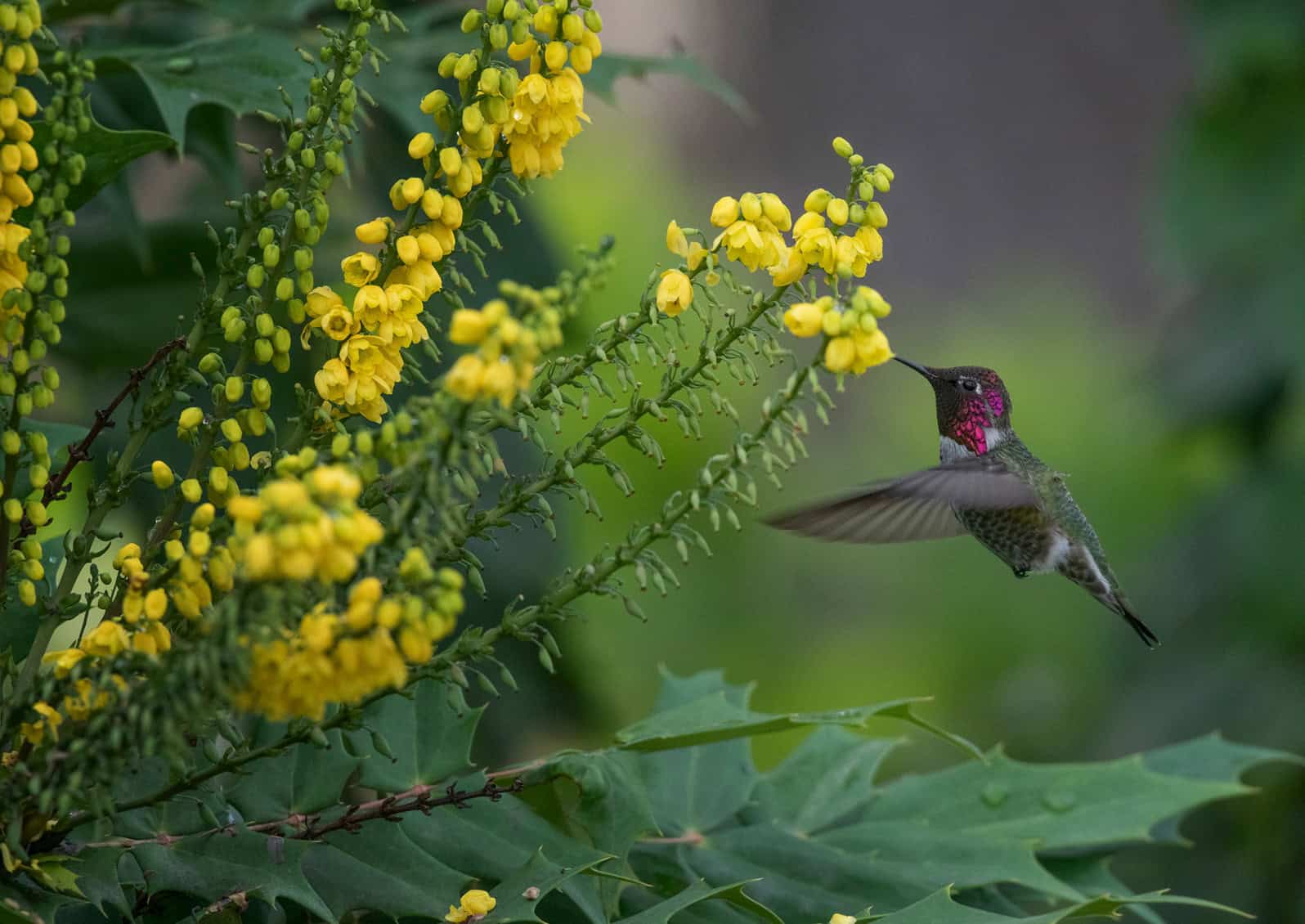
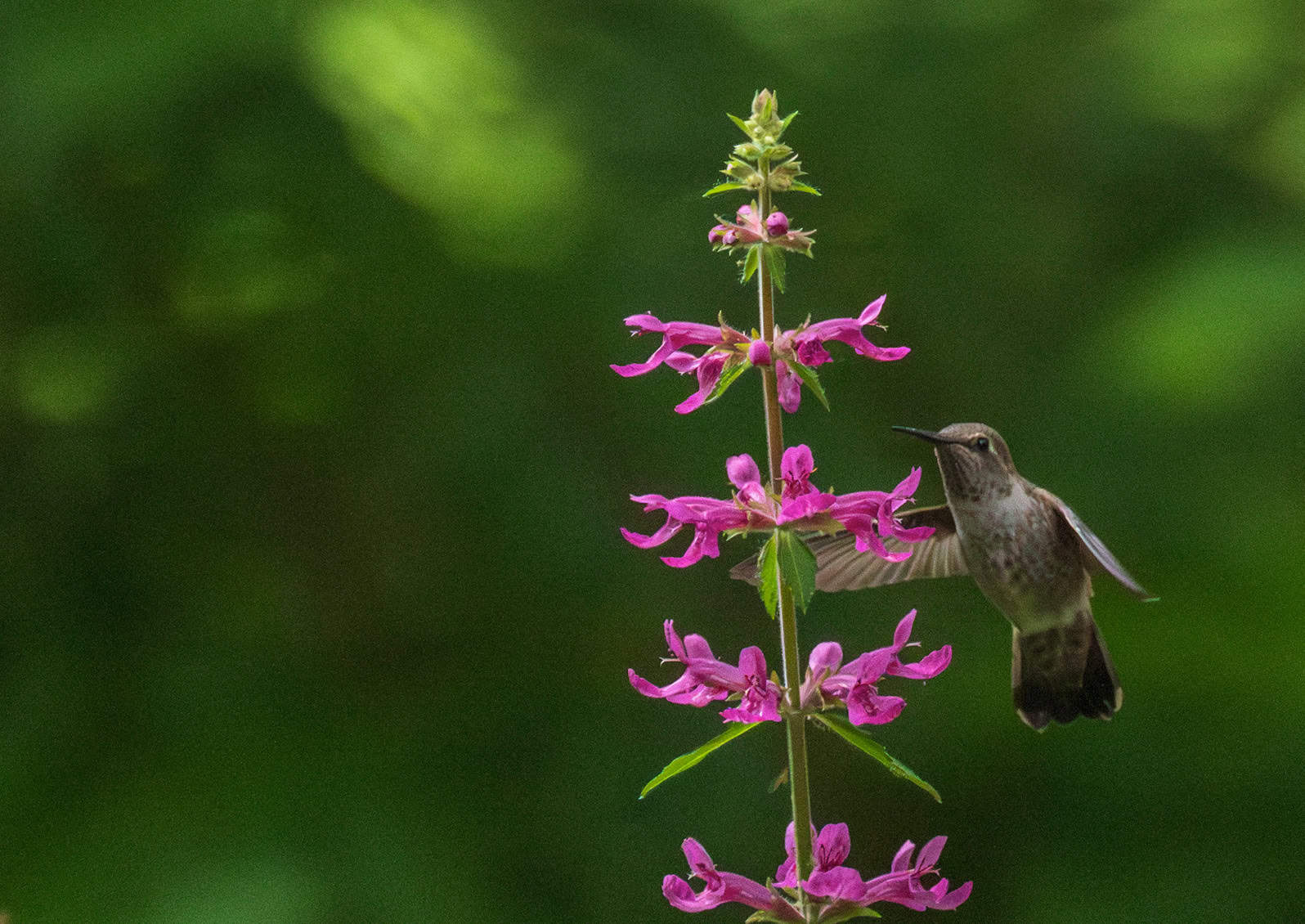


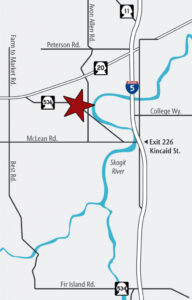
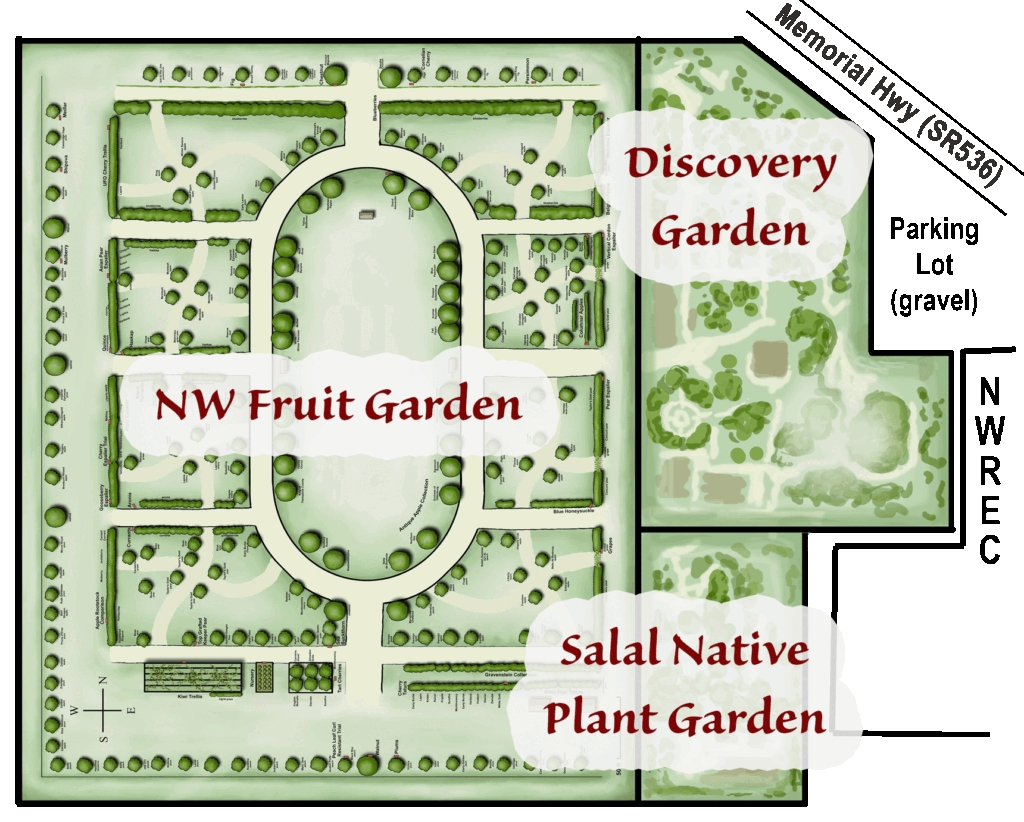 The Skagit Valley is home to three display gardens operated by volunteers as a learning resource for the public: the WSU Extension Master Gardener Discovery Garden, the Salal Native Plant Garden, and the NW Fruit Garden. The gardens are co-located on the grounds of Washington State University (WSU) Northwestern Washington Research and Extension Center (NWREC) in Mount Vernon, WA (
The Skagit Valley is home to three display gardens operated by volunteers as a learning resource for the public: the WSU Extension Master Gardener Discovery Garden, the Salal Native Plant Garden, and the NW Fruit Garden. The gardens are co-located on the grounds of Washington State University (WSU) Northwestern Washington Research and Extension Center (NWREC) in Mount Vernon, WA (

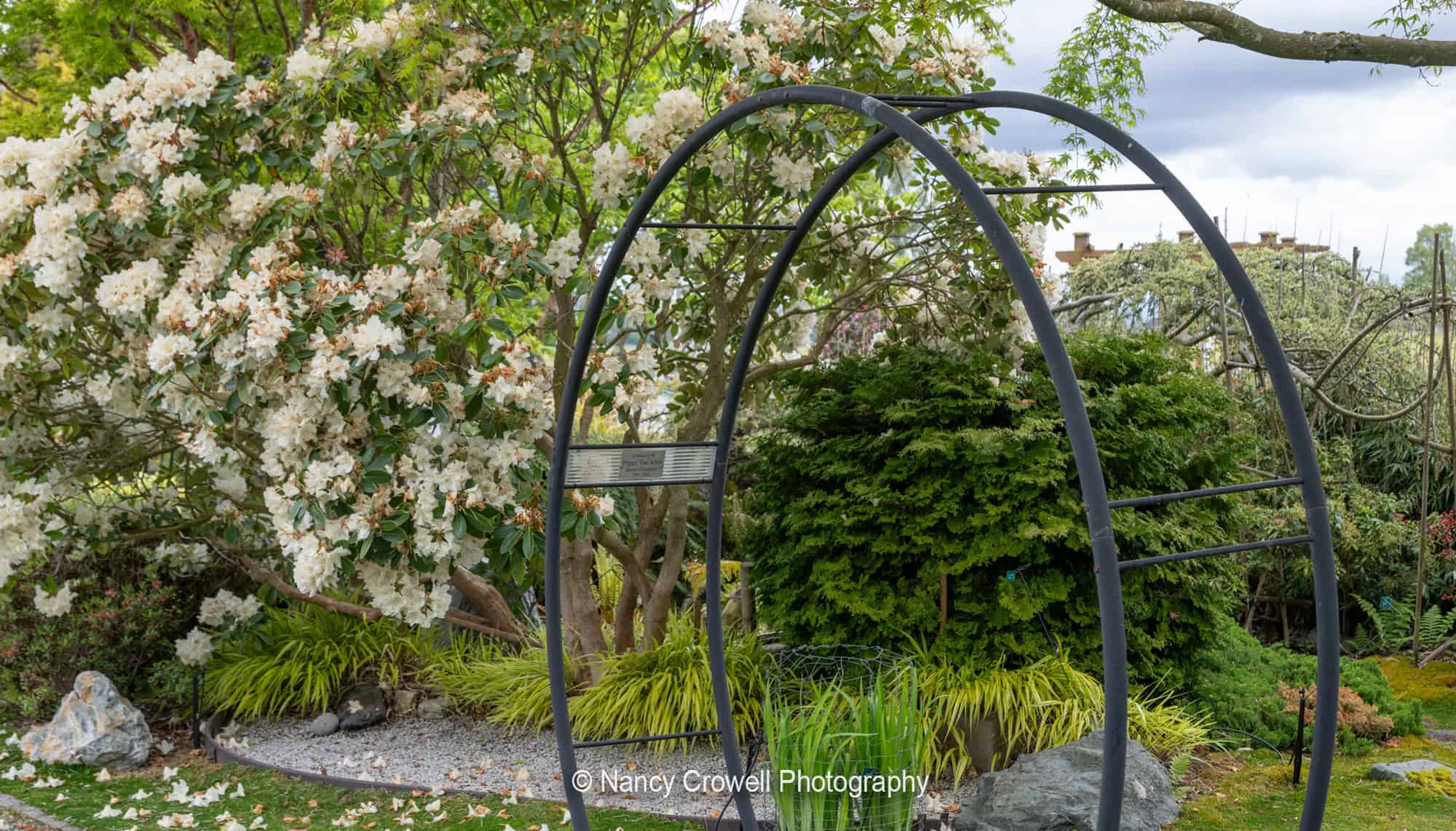
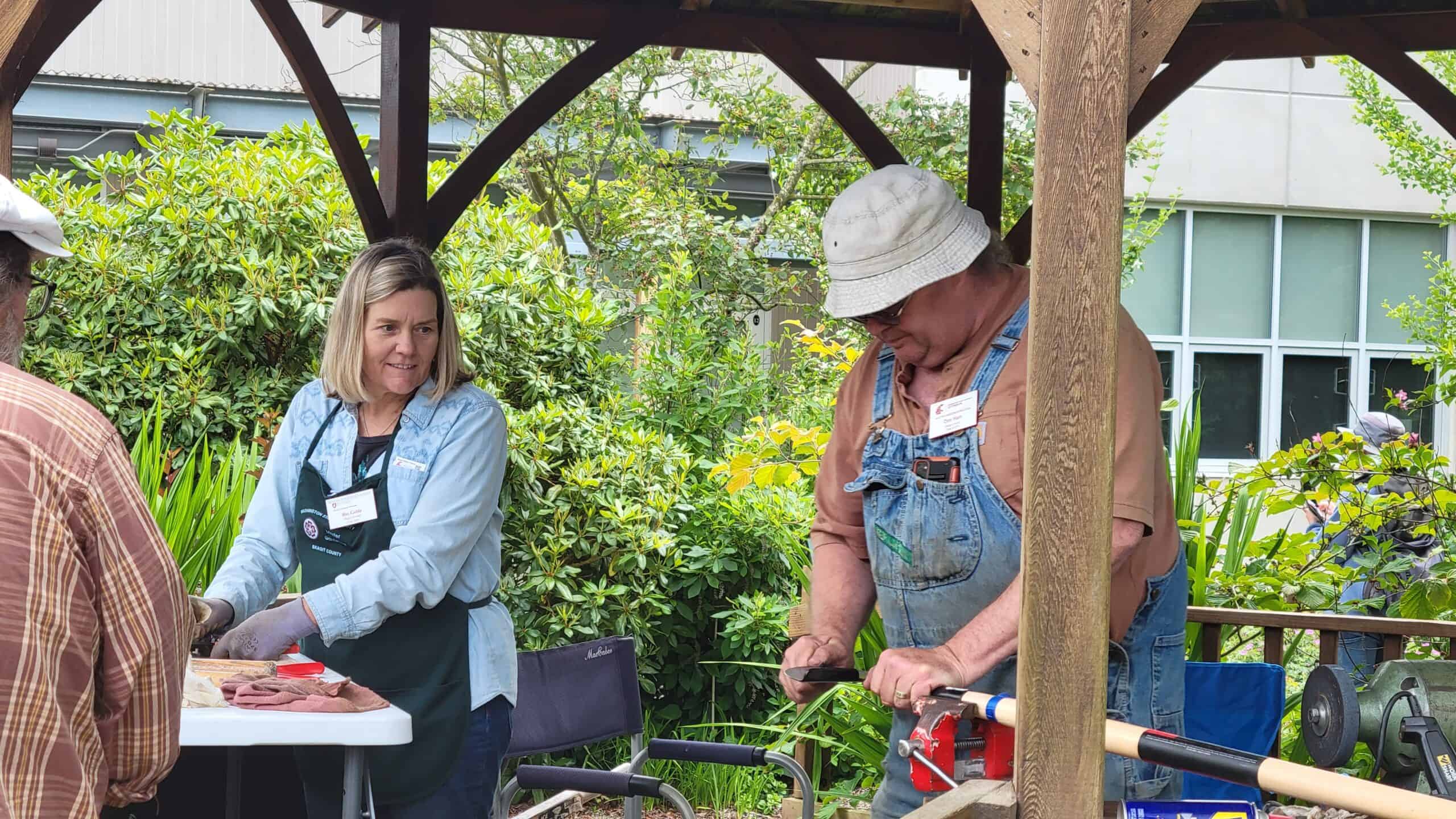
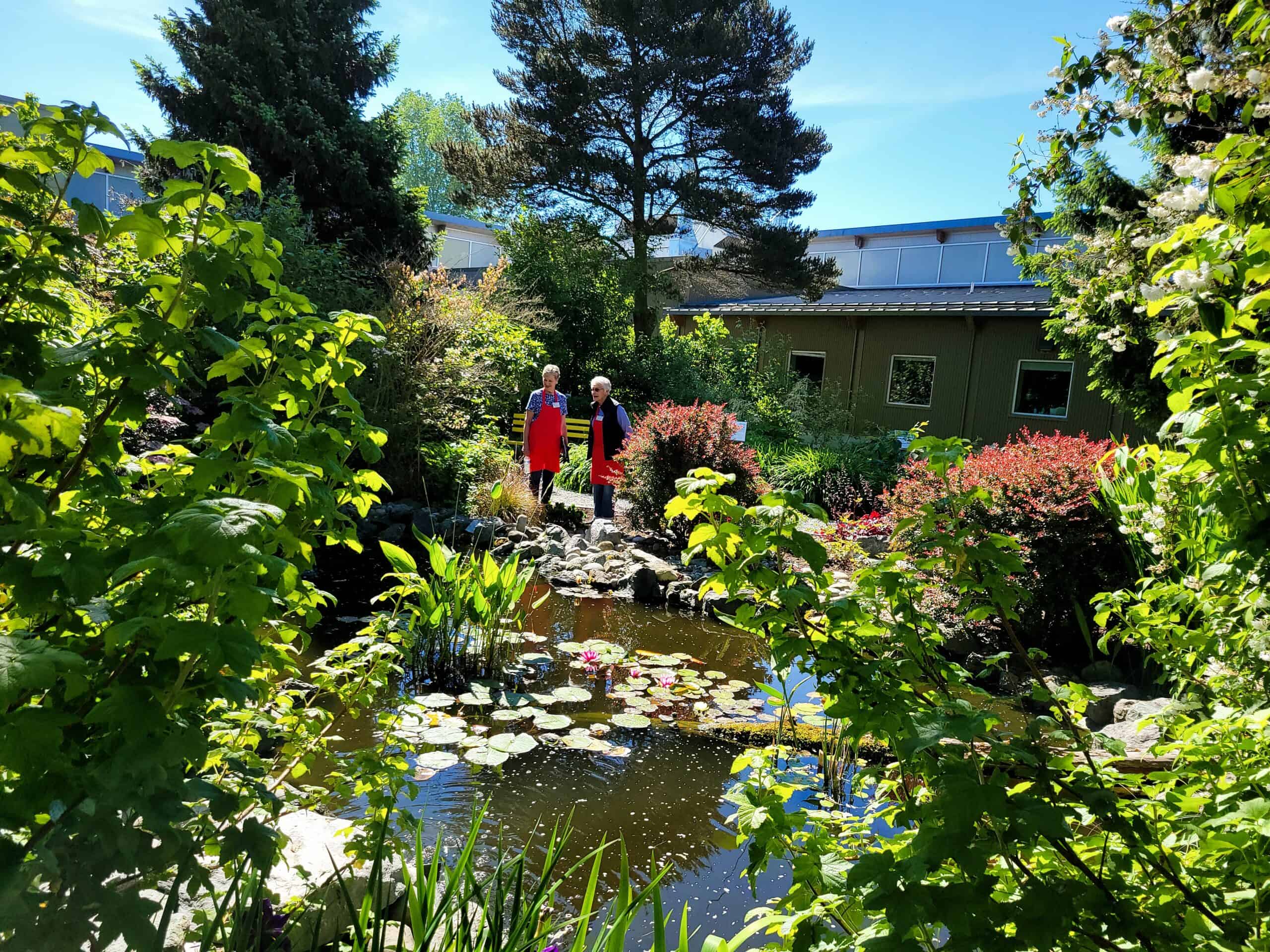
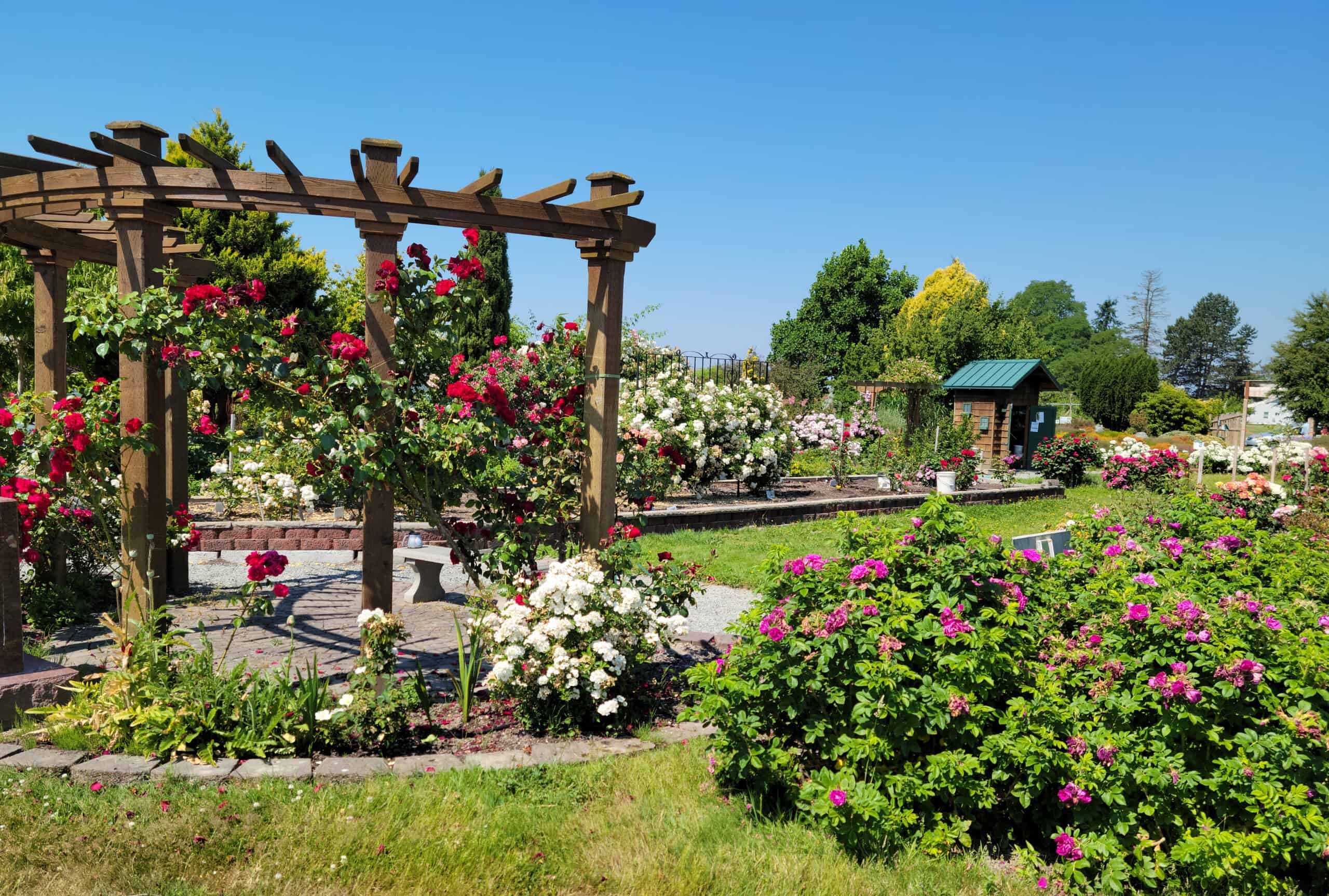
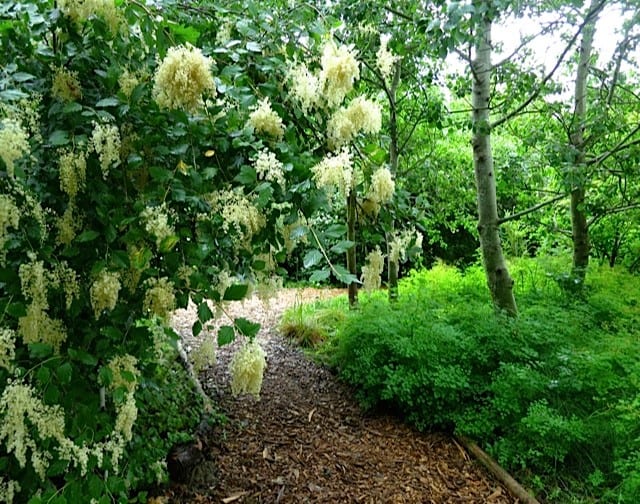


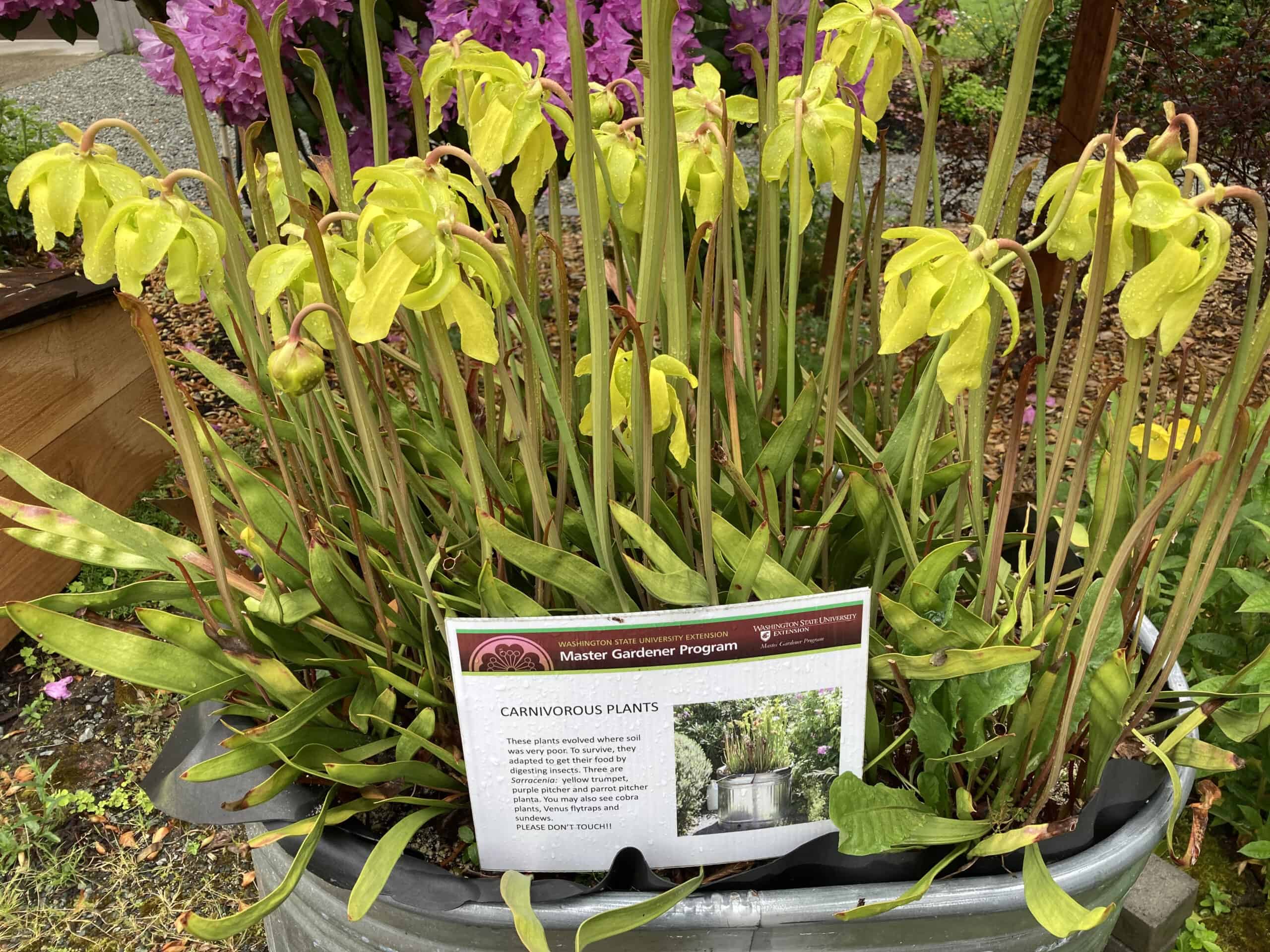


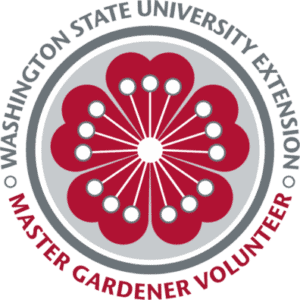 Skagit County WSU Extension Master Gardeners will be on-site to provide research-based solutions for your gardening challenges. Visit our Plant Clinic in the Pavilion for solutions to your plant problems or bring in a plant sample for identification. There will be a perennial plant sale. Bring your dull gardening tool to have it sharpened for free.
Skagit County WSU Extension Master Gardeners will be on-site to provide research-based solutions for your gardening challenges. Visit our Plant Clinic in the Pavilion for solutions to your plant problems or bring in a plant sample for identification. There will be a perennial plant sale. Bring your dull gardening tool to have it sharpened for free.

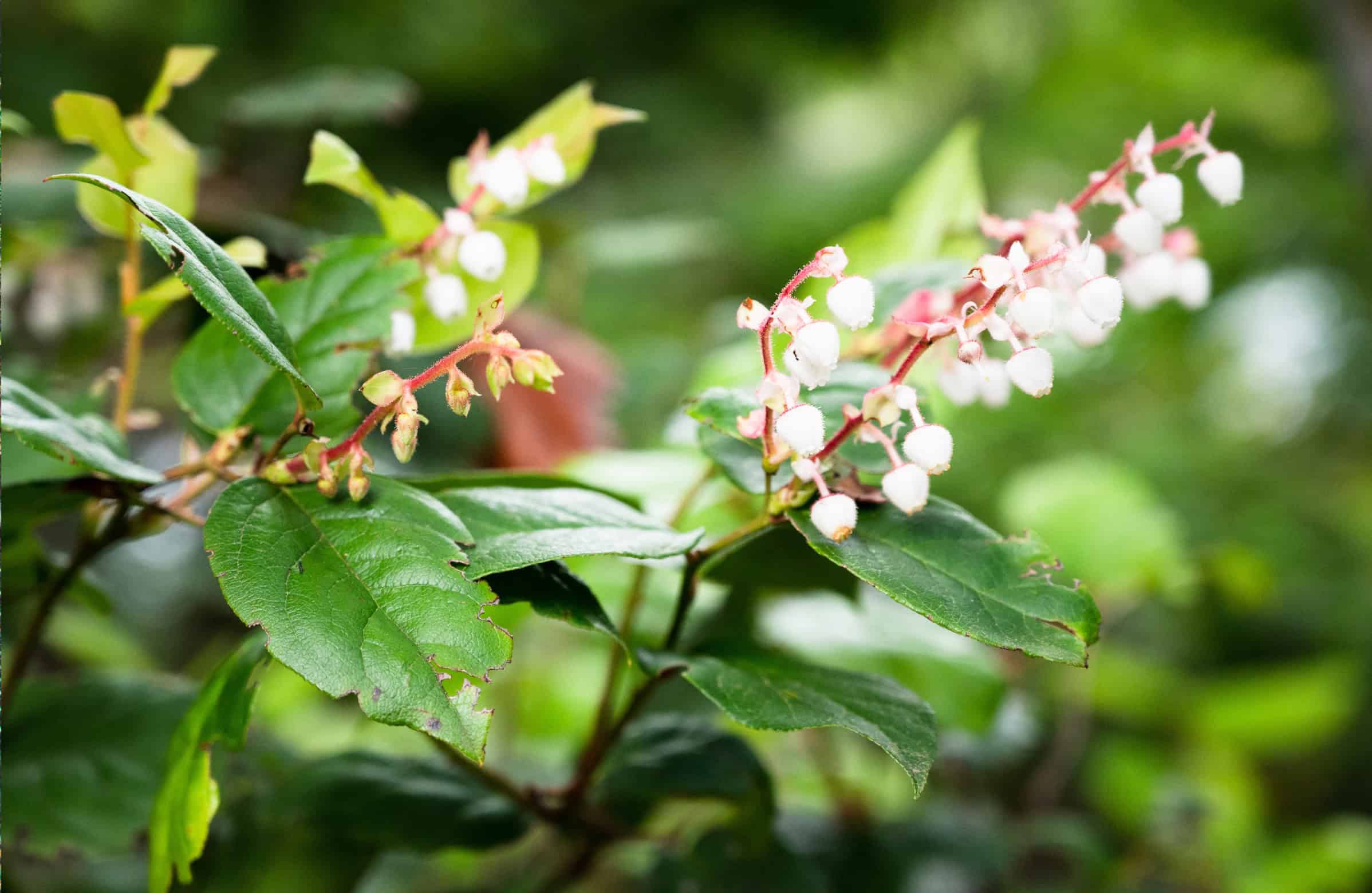
 The
The 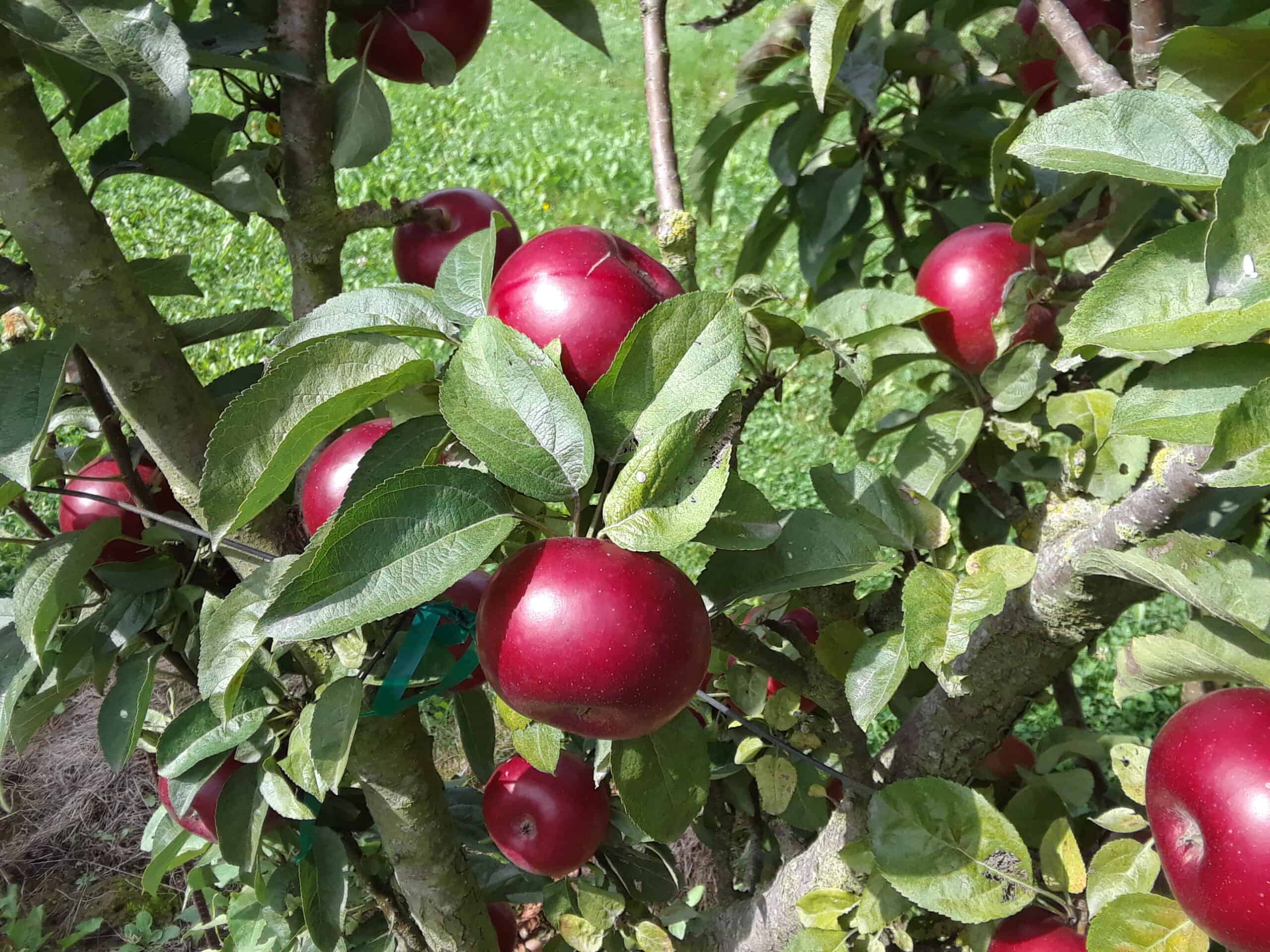
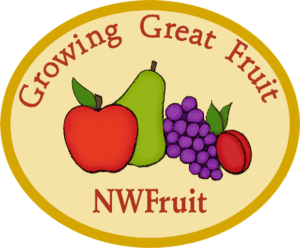 The
The 